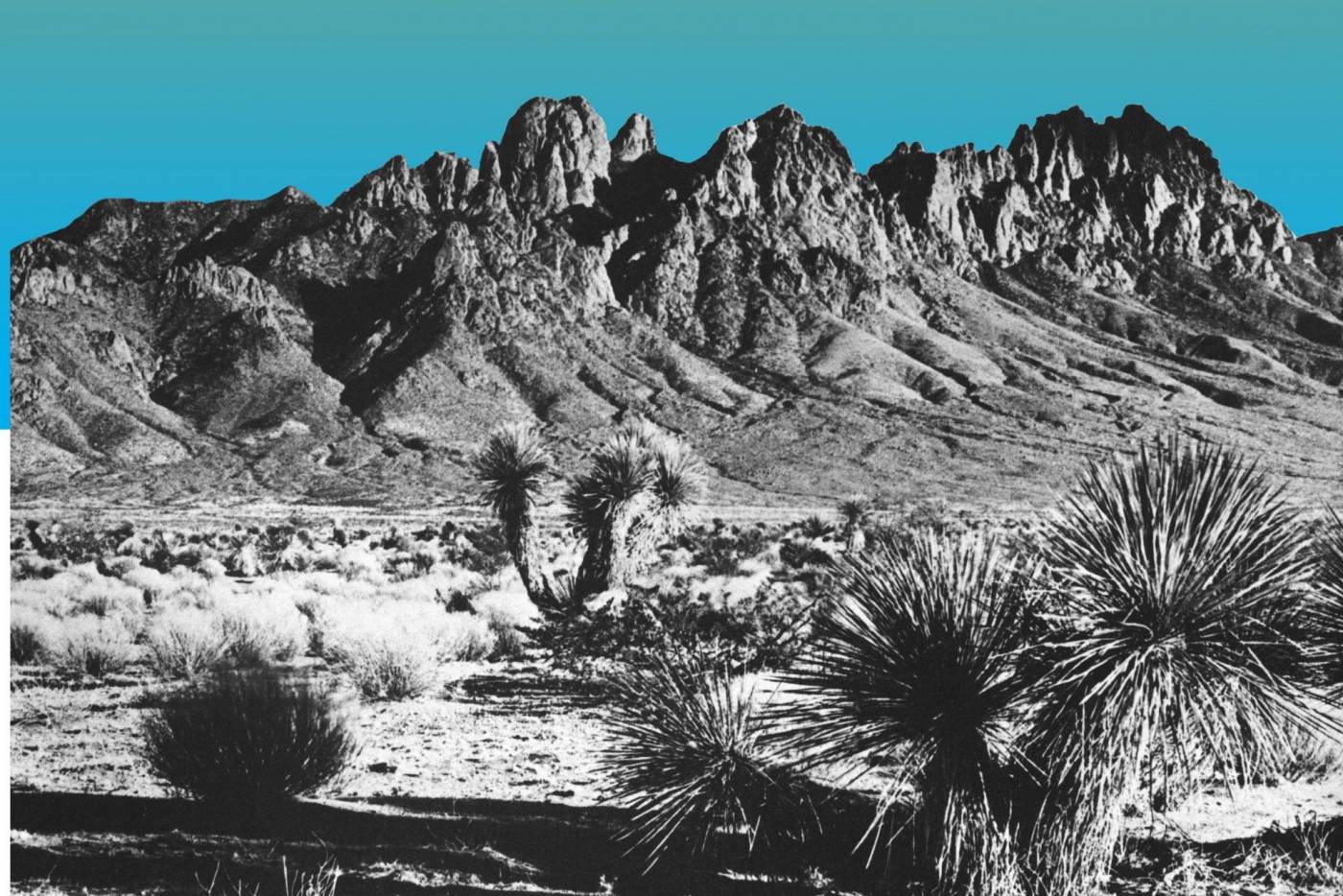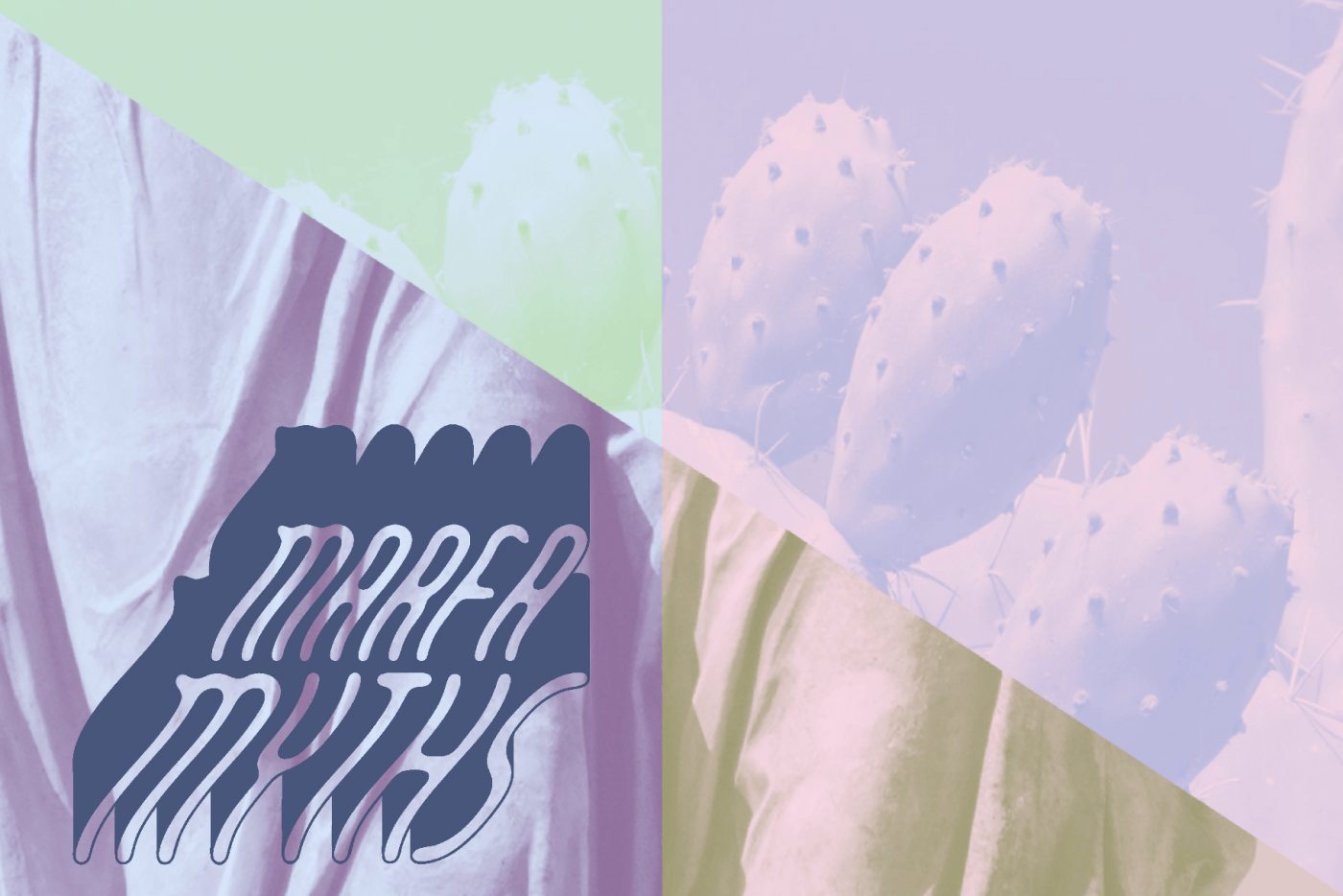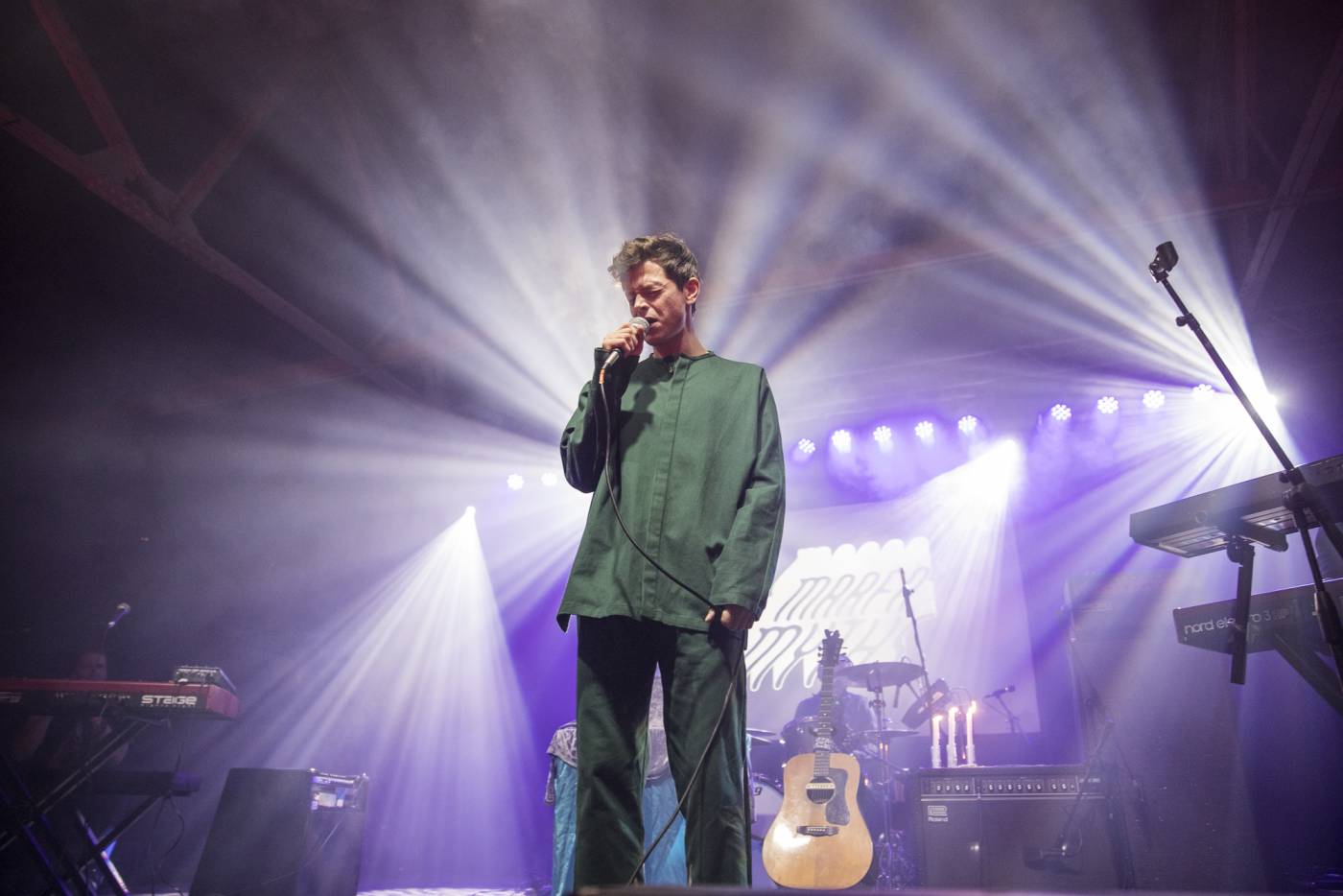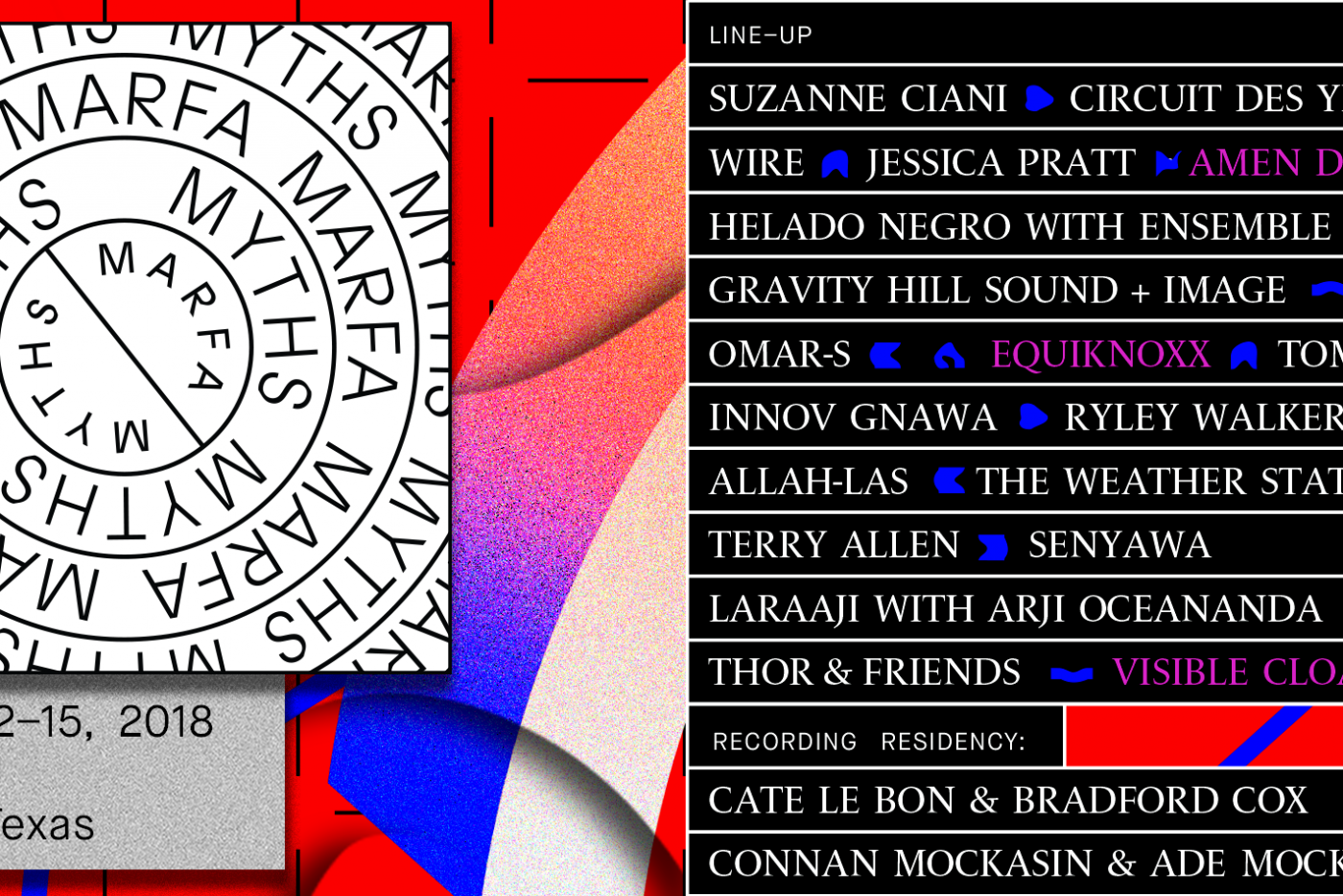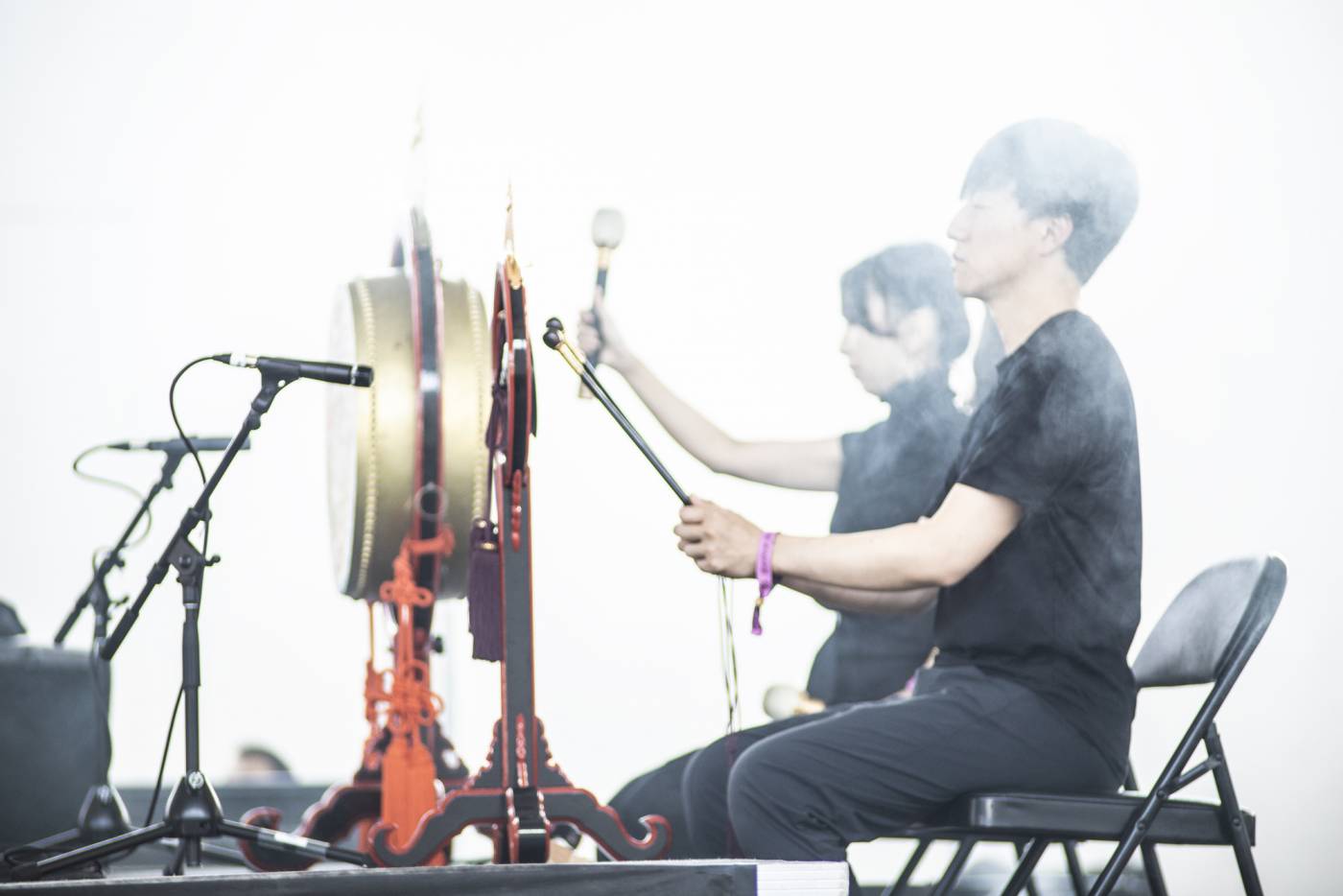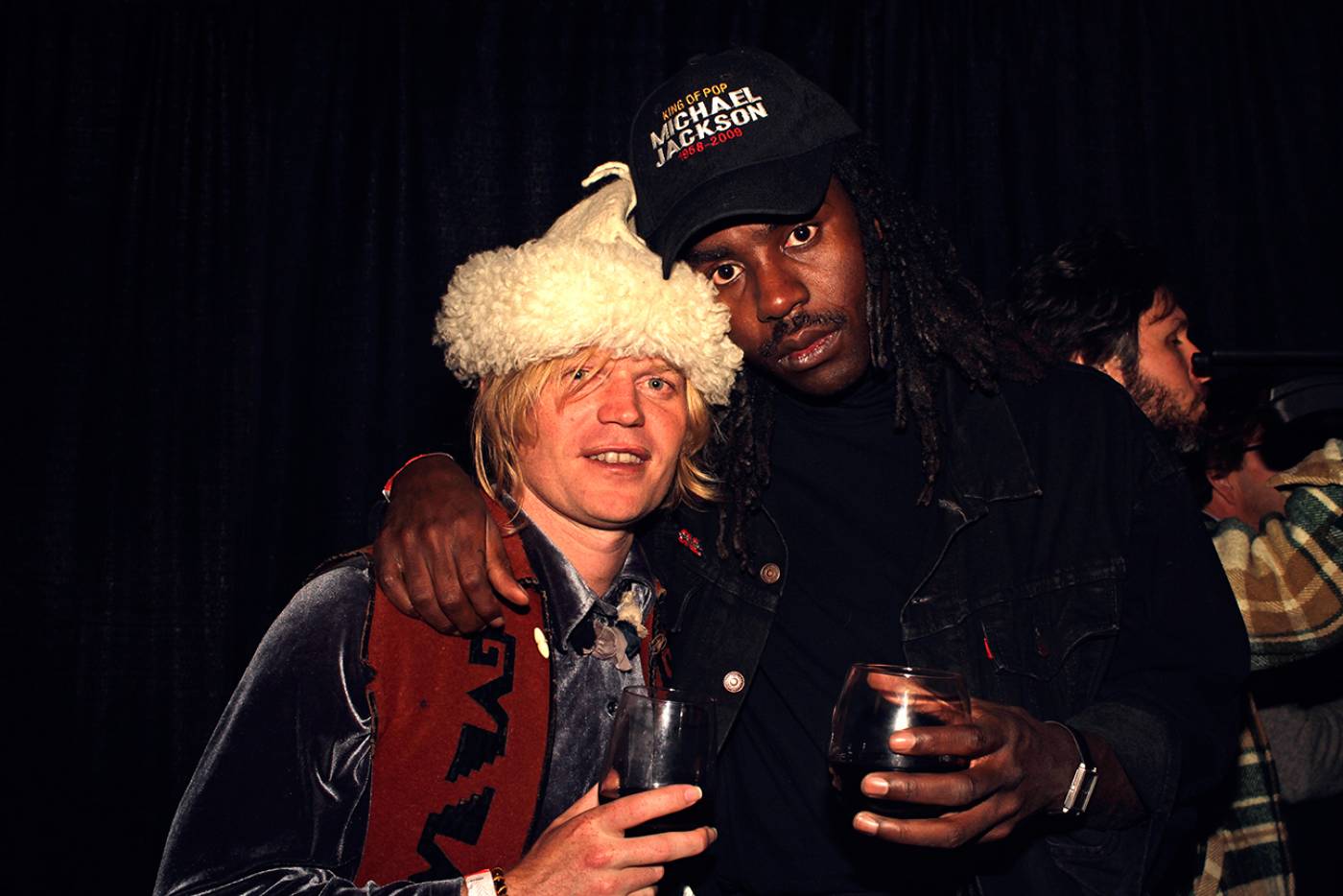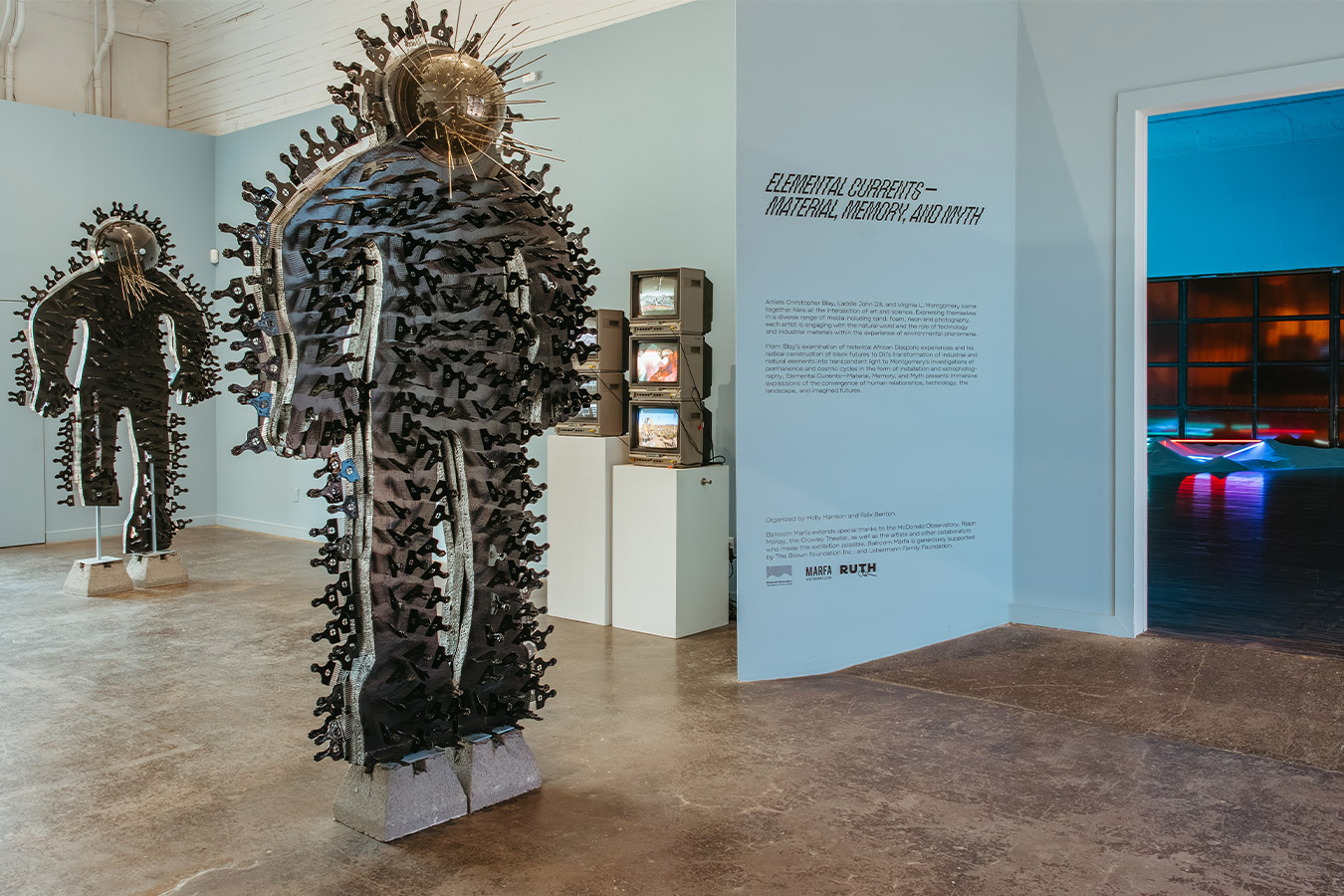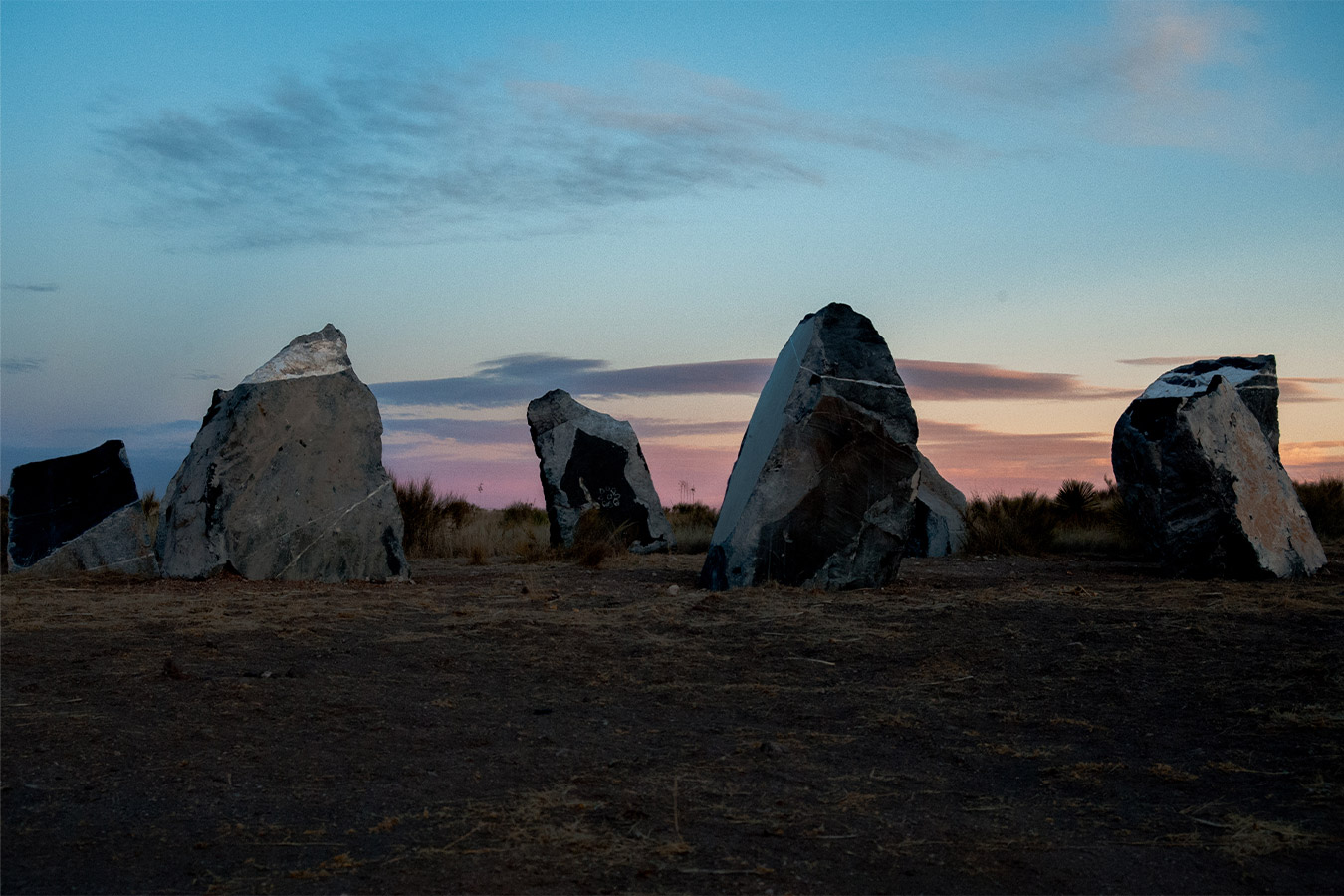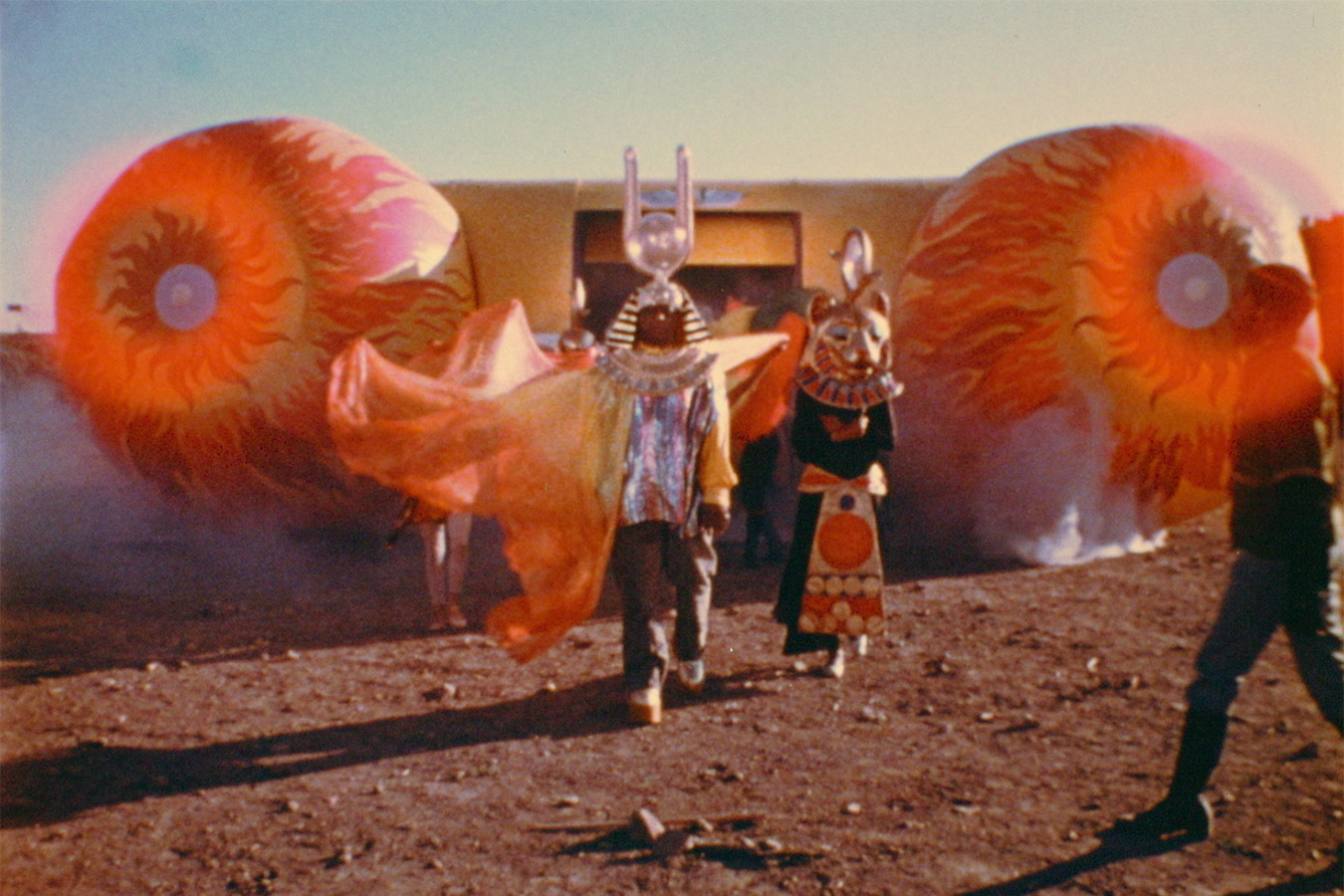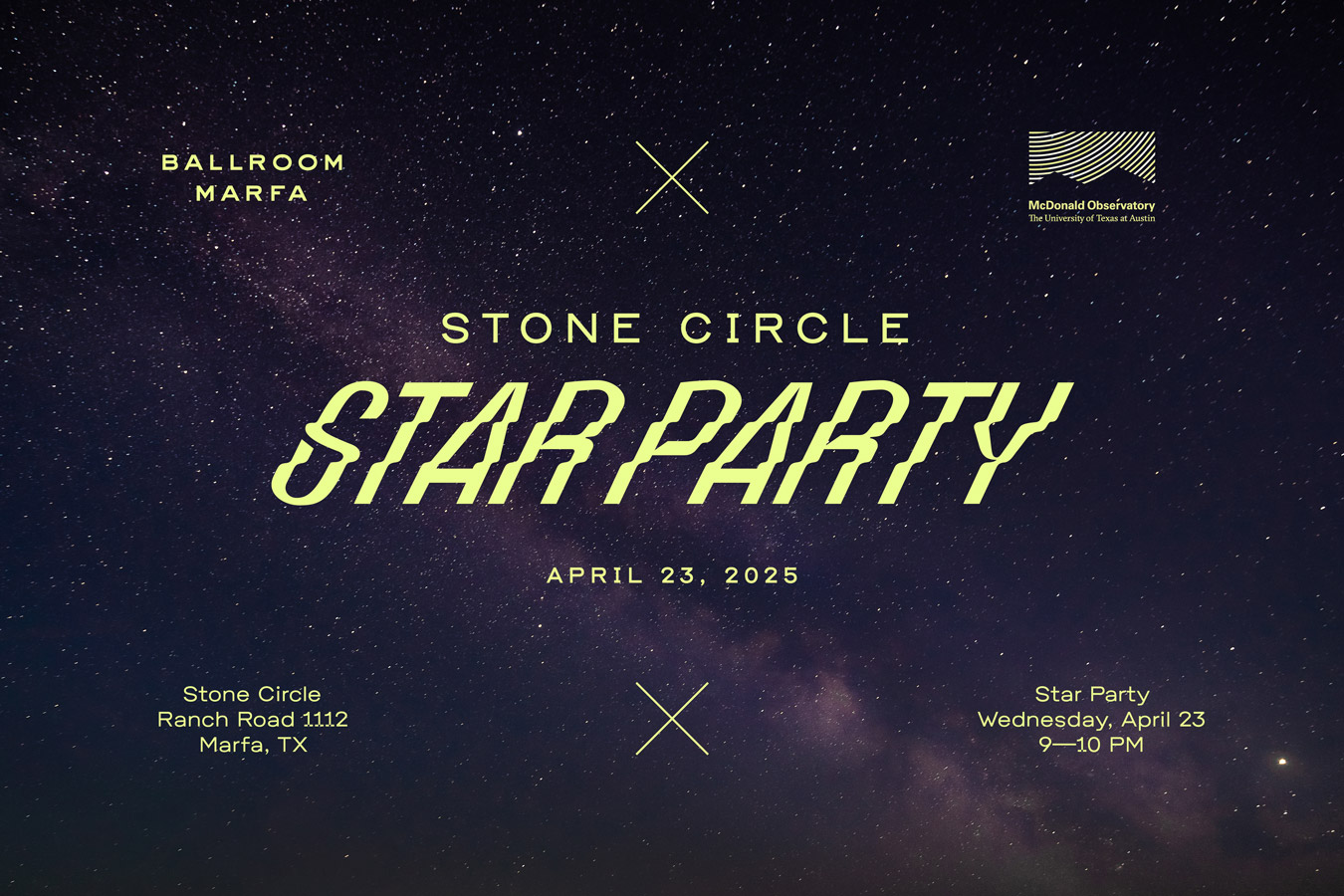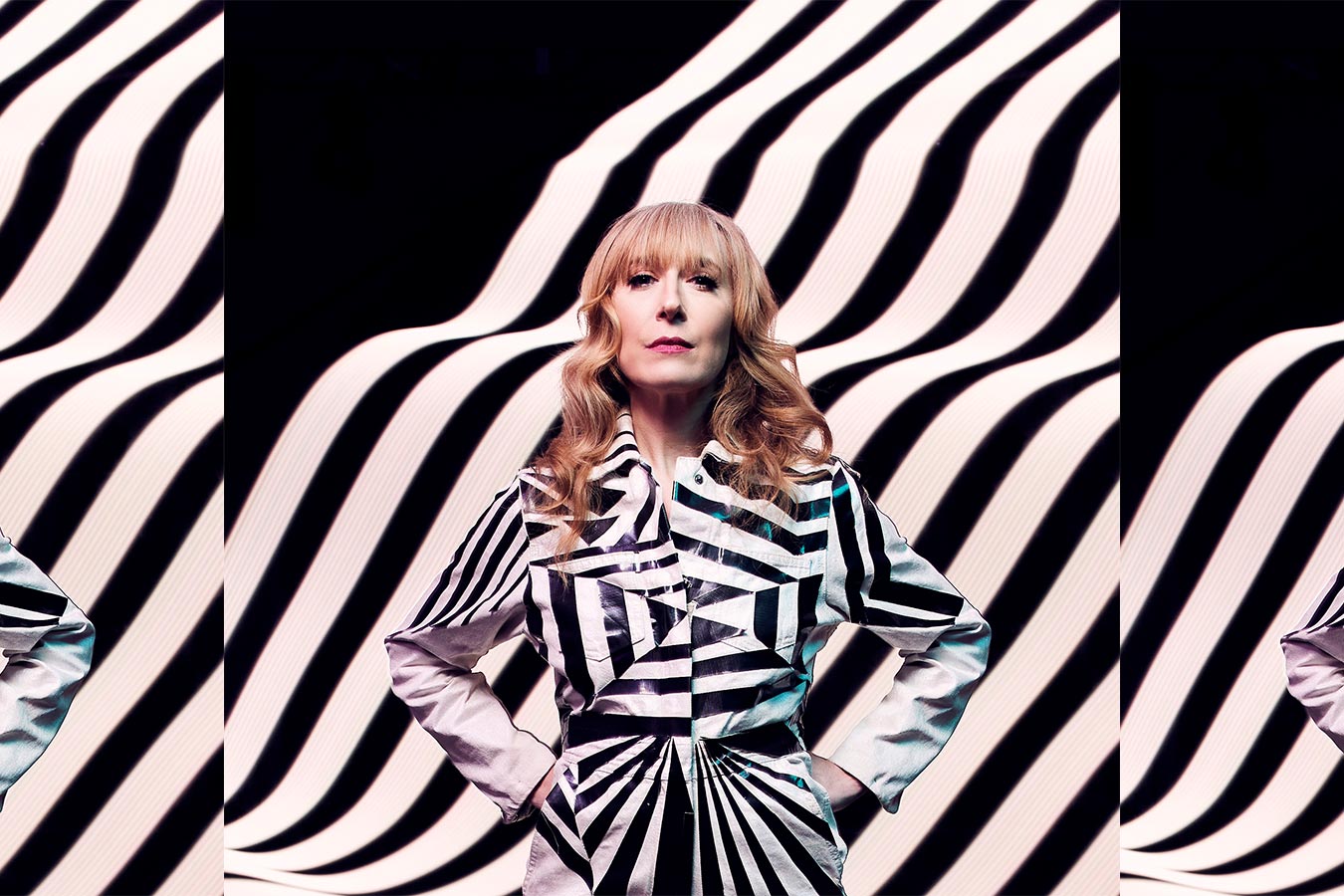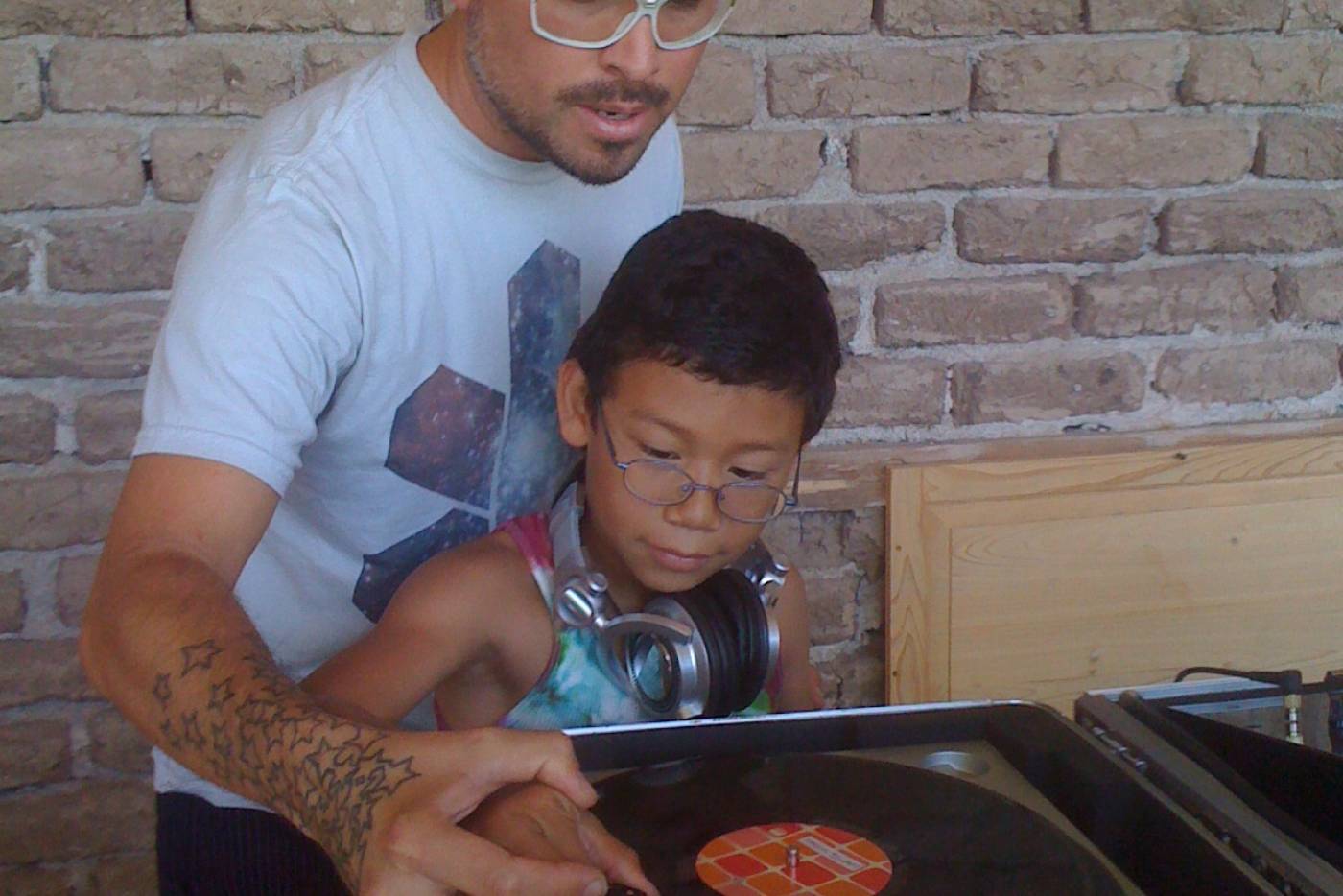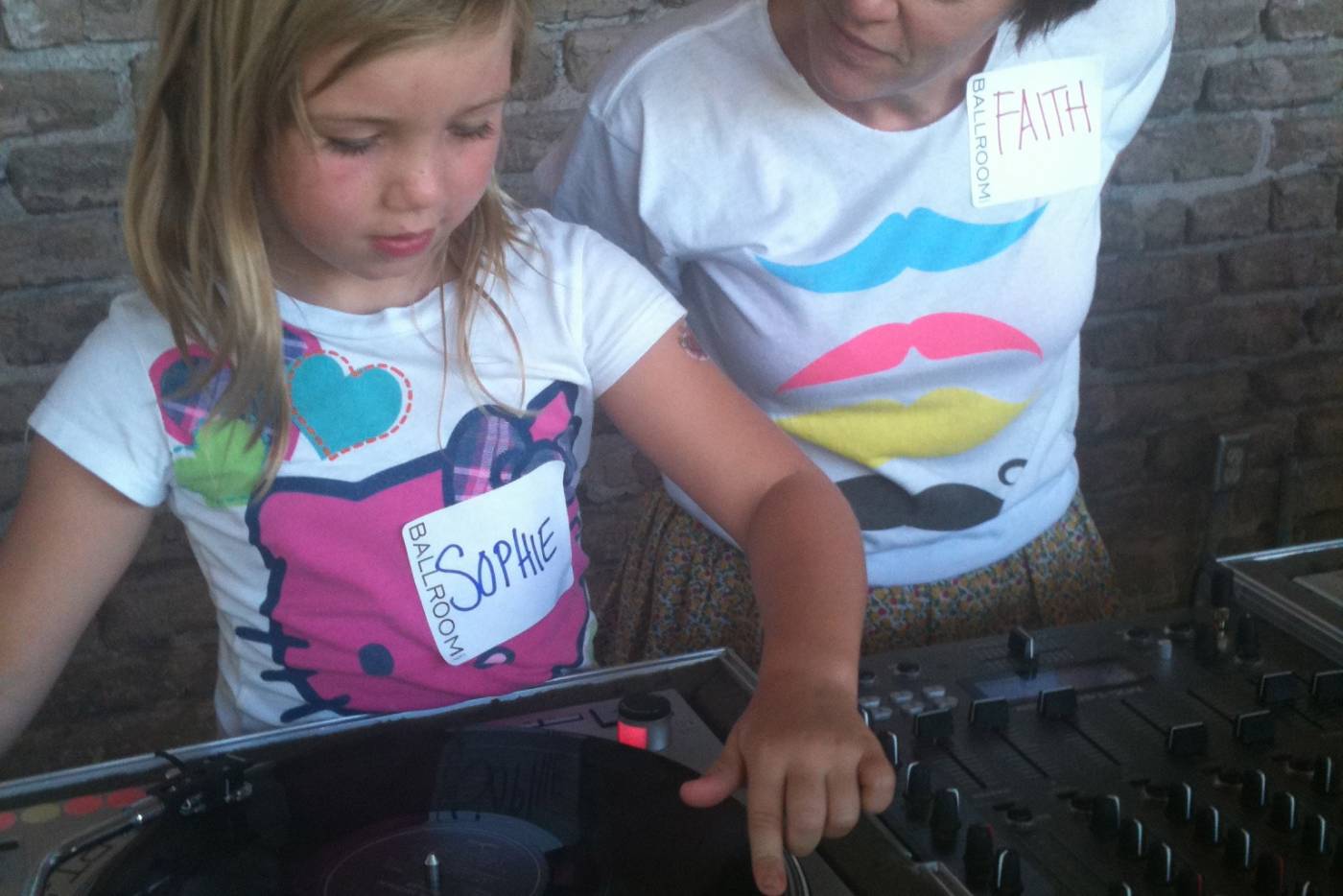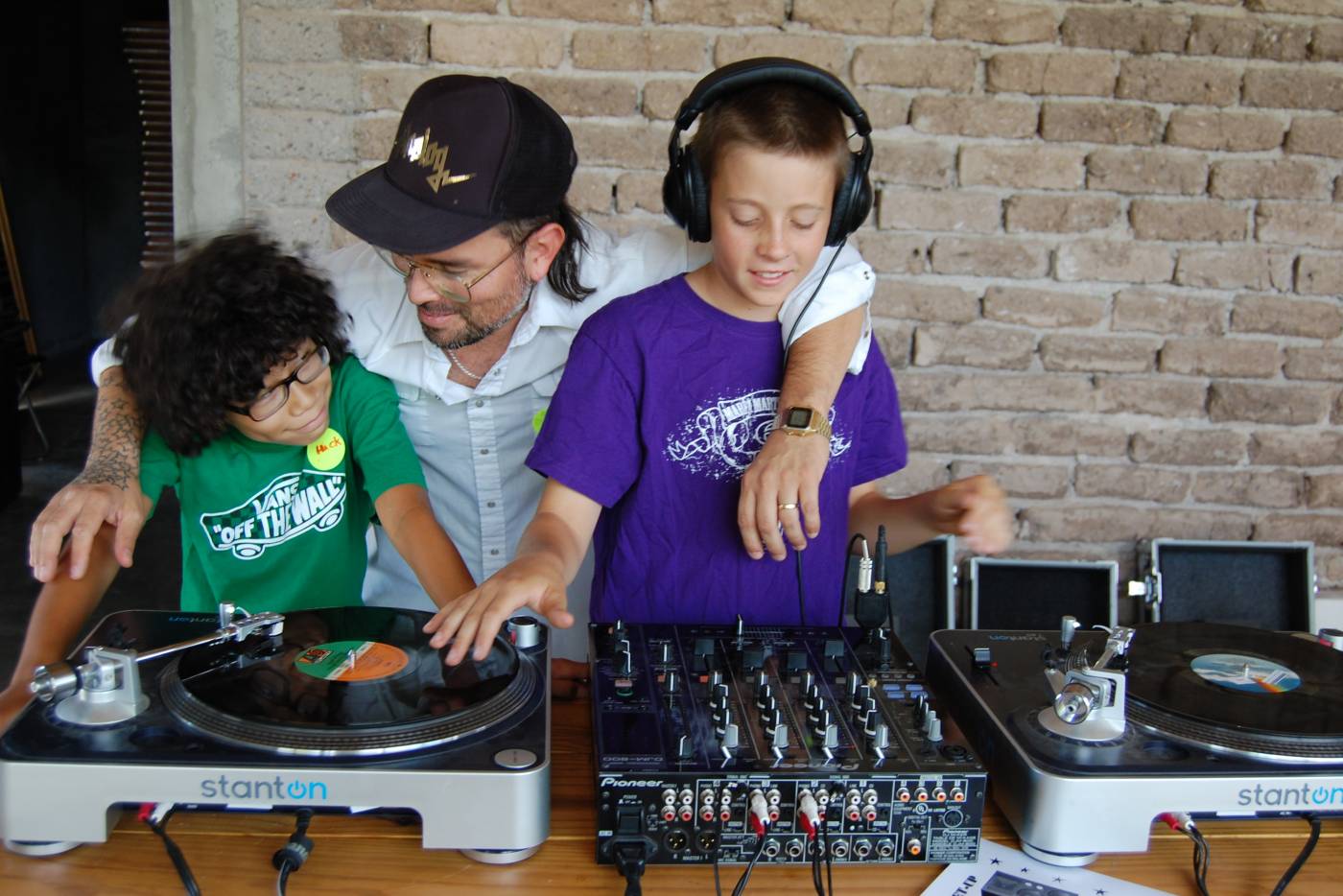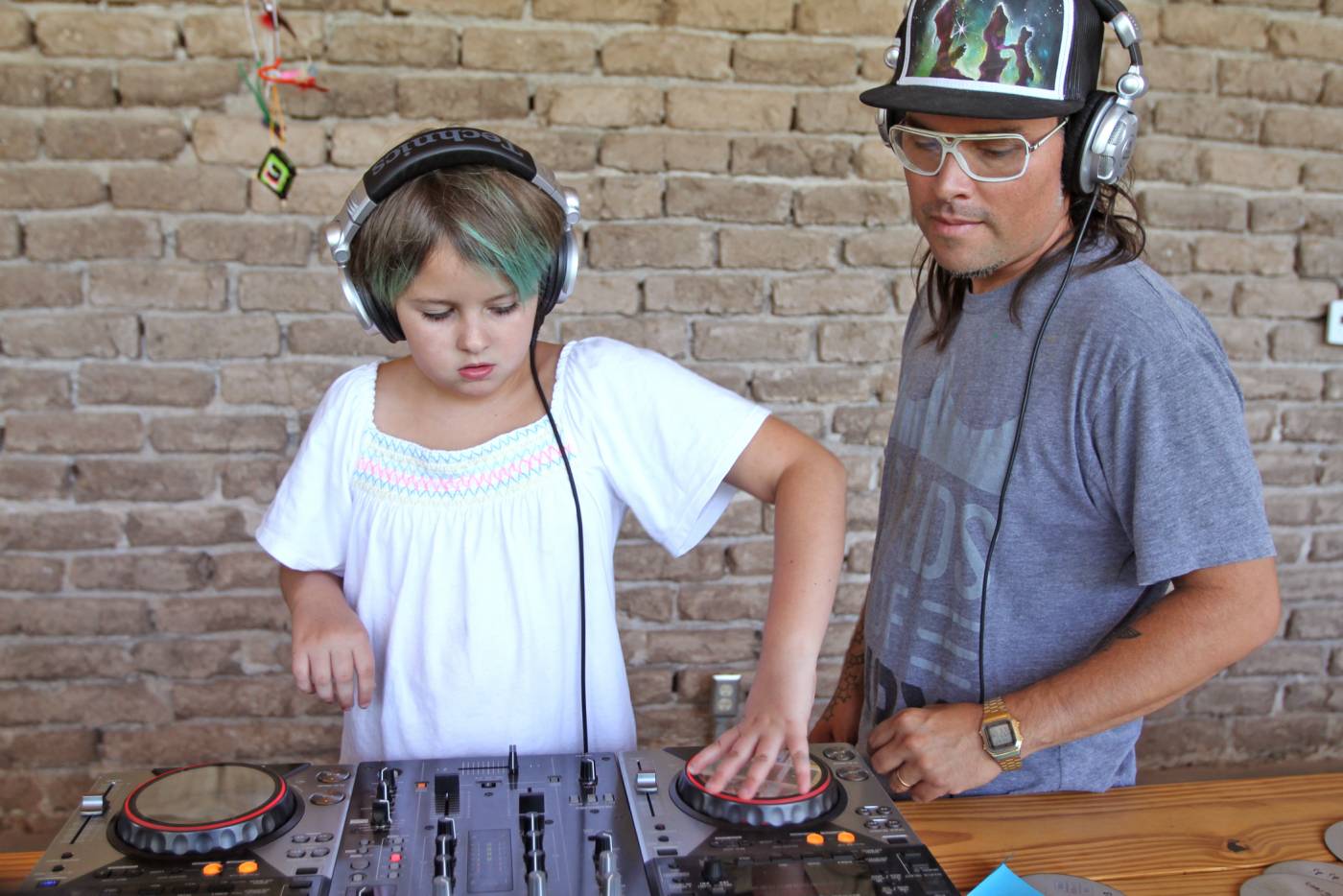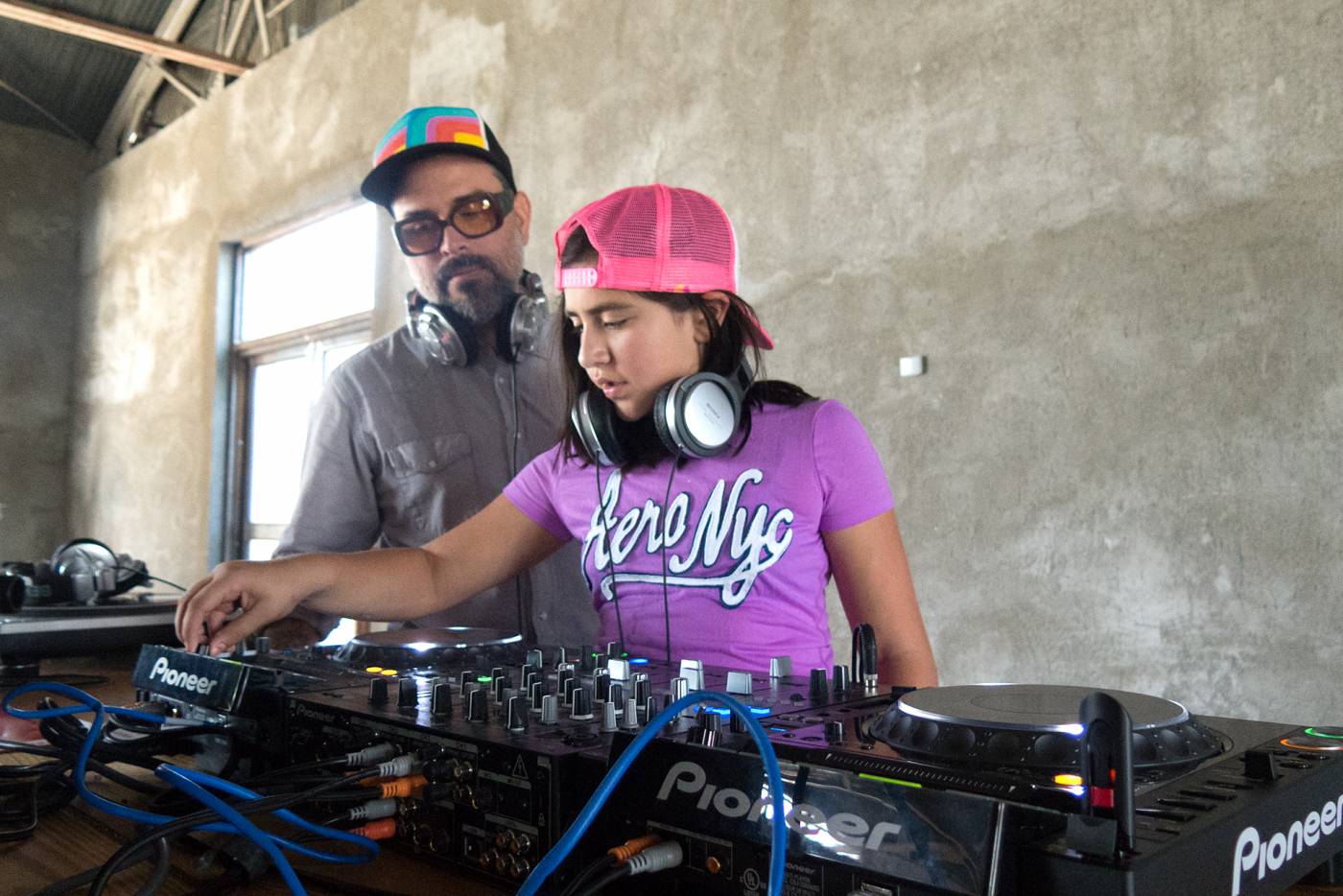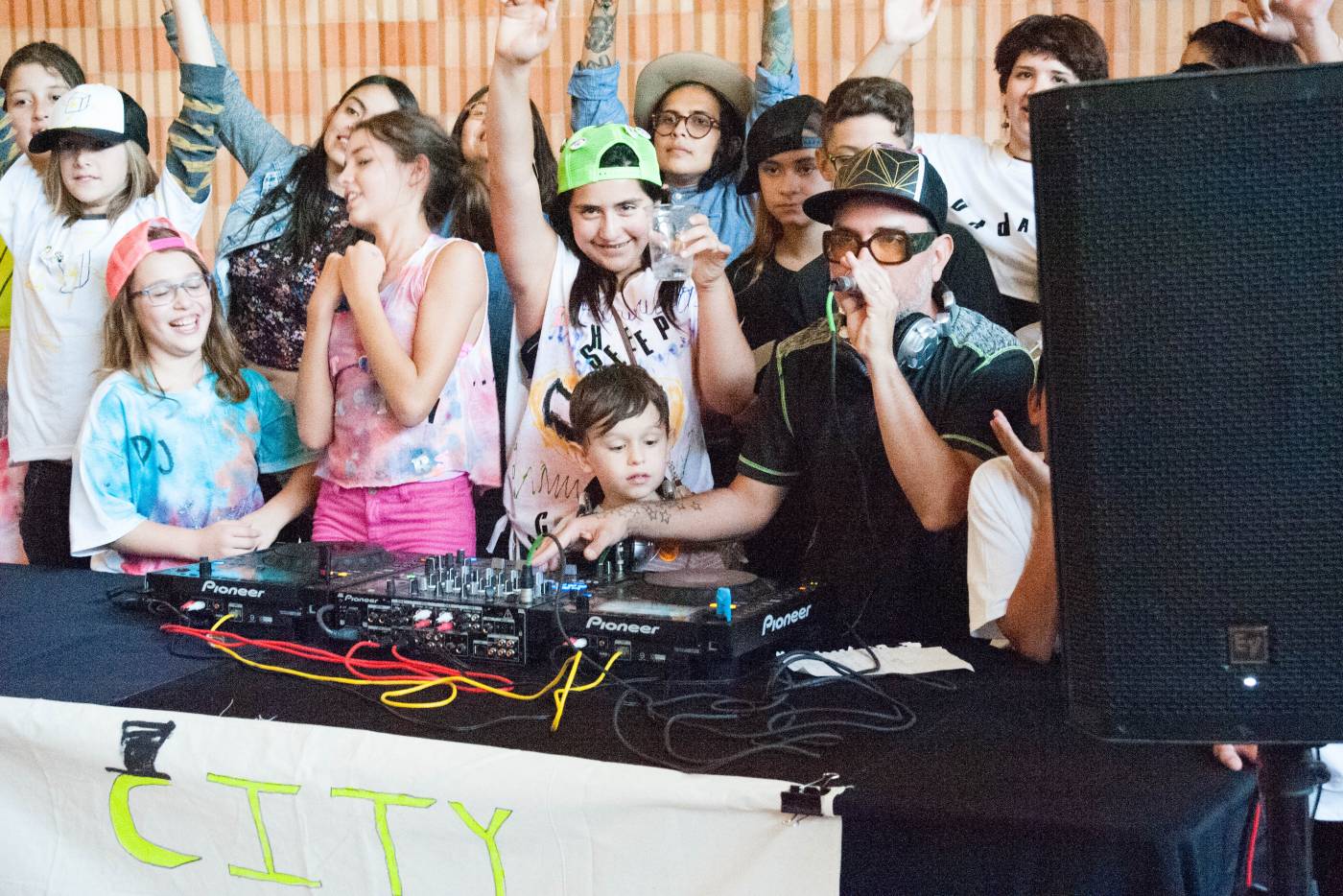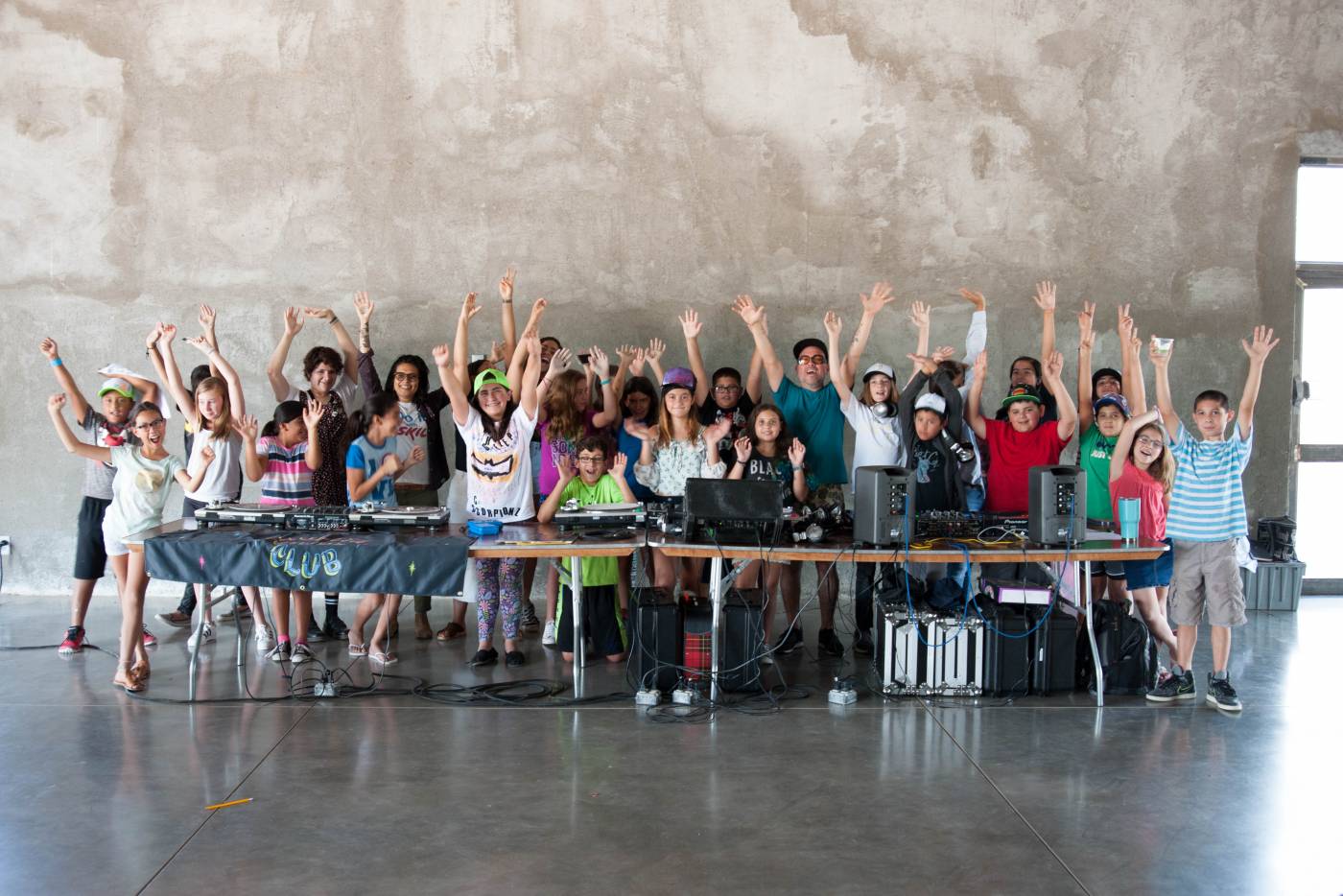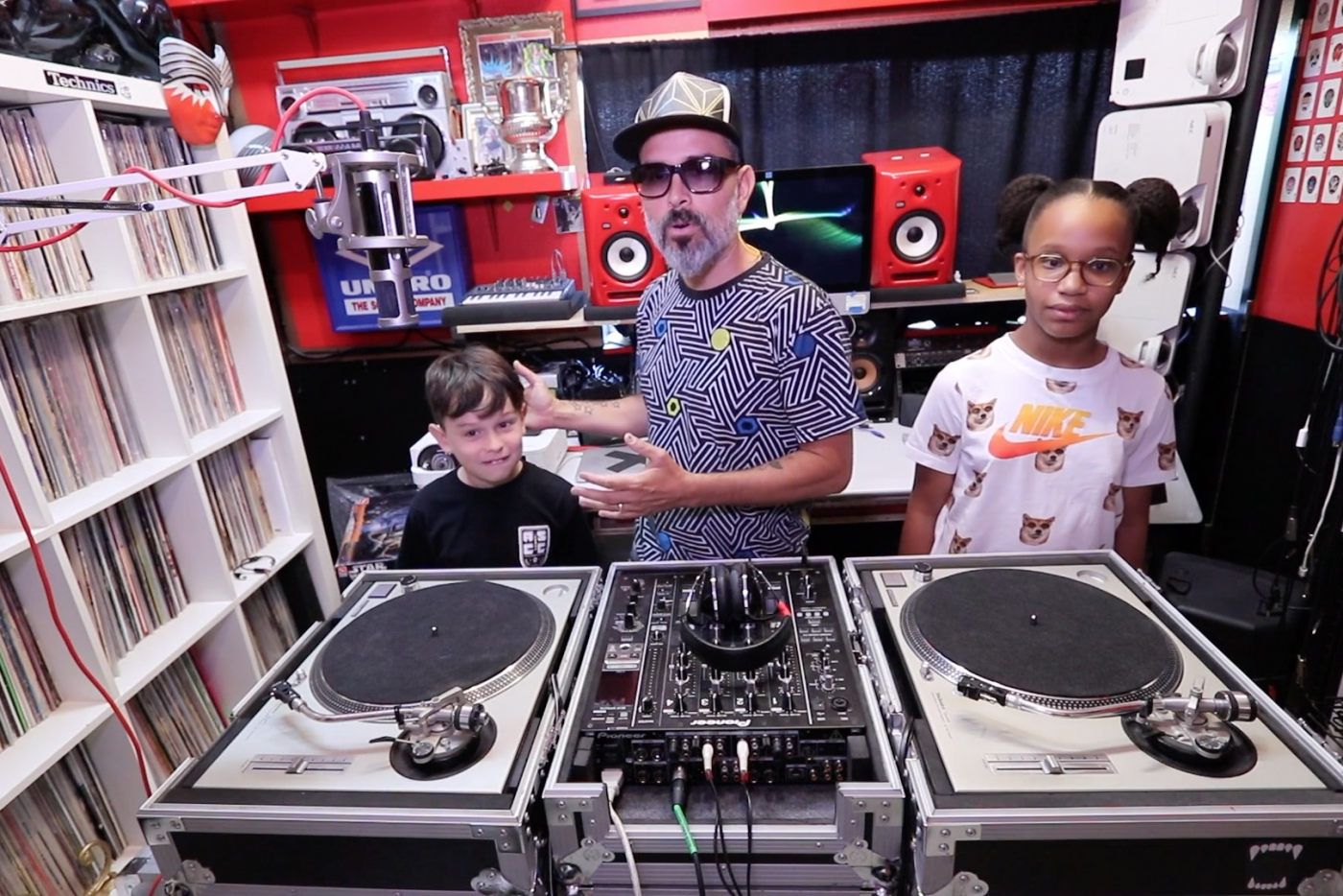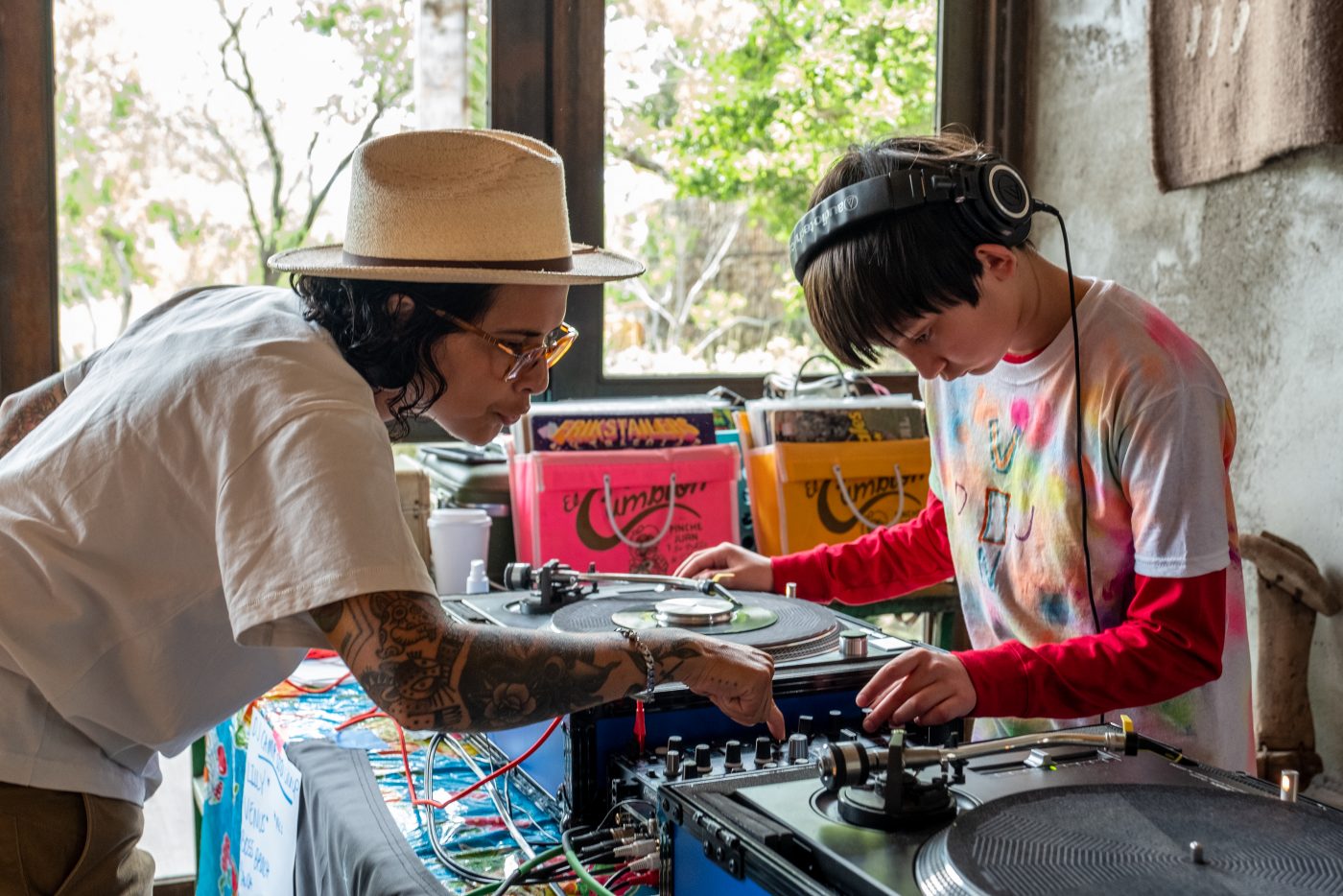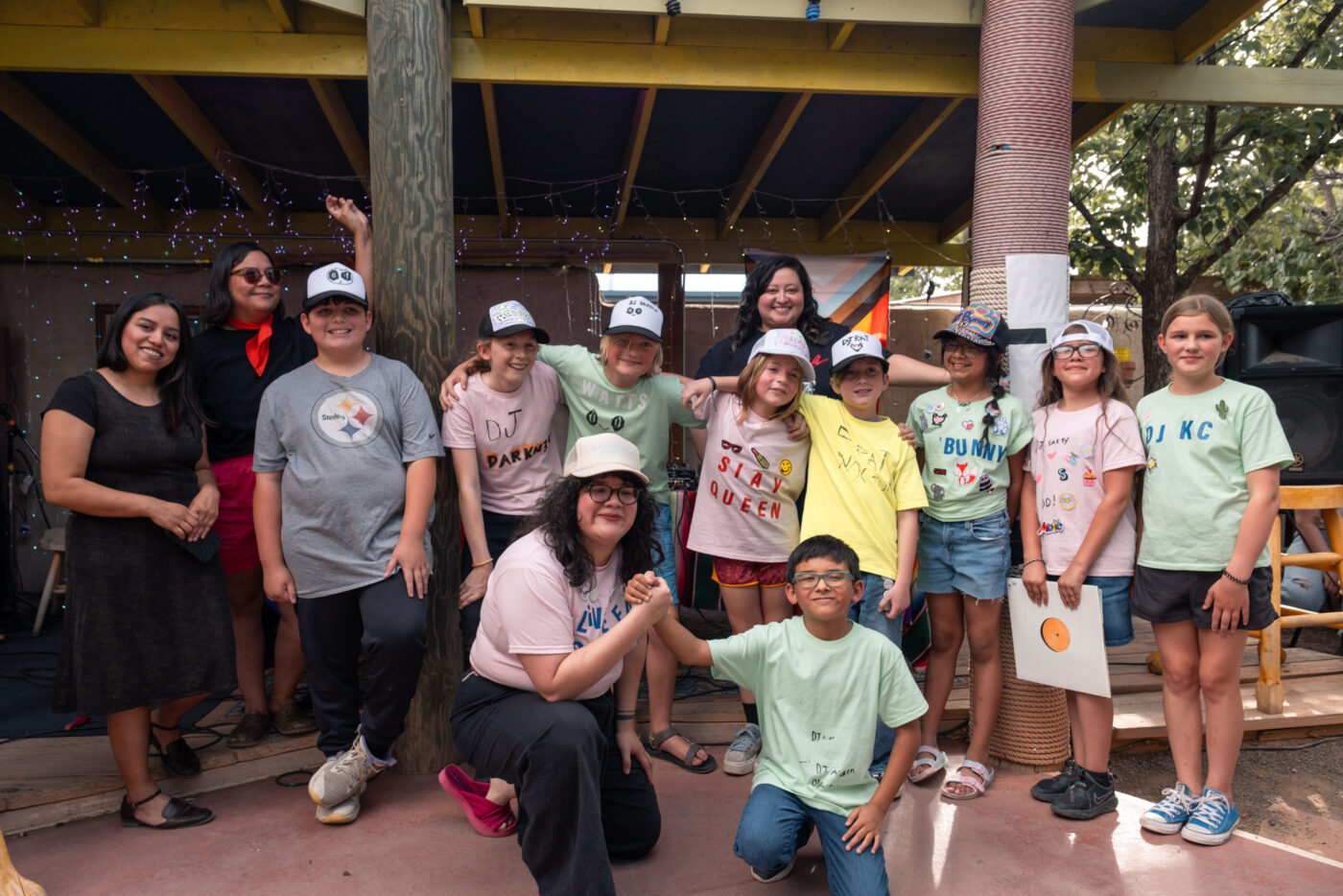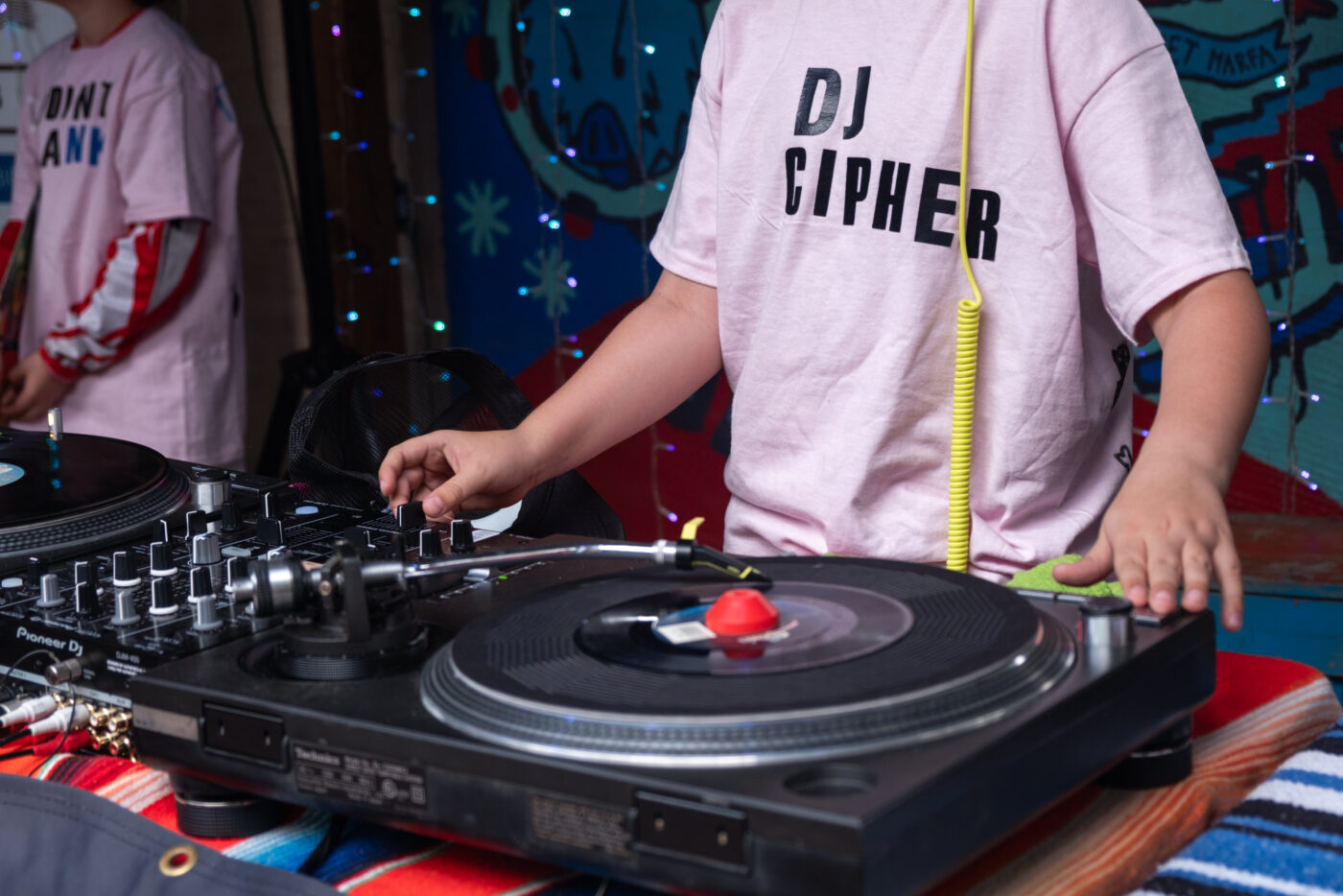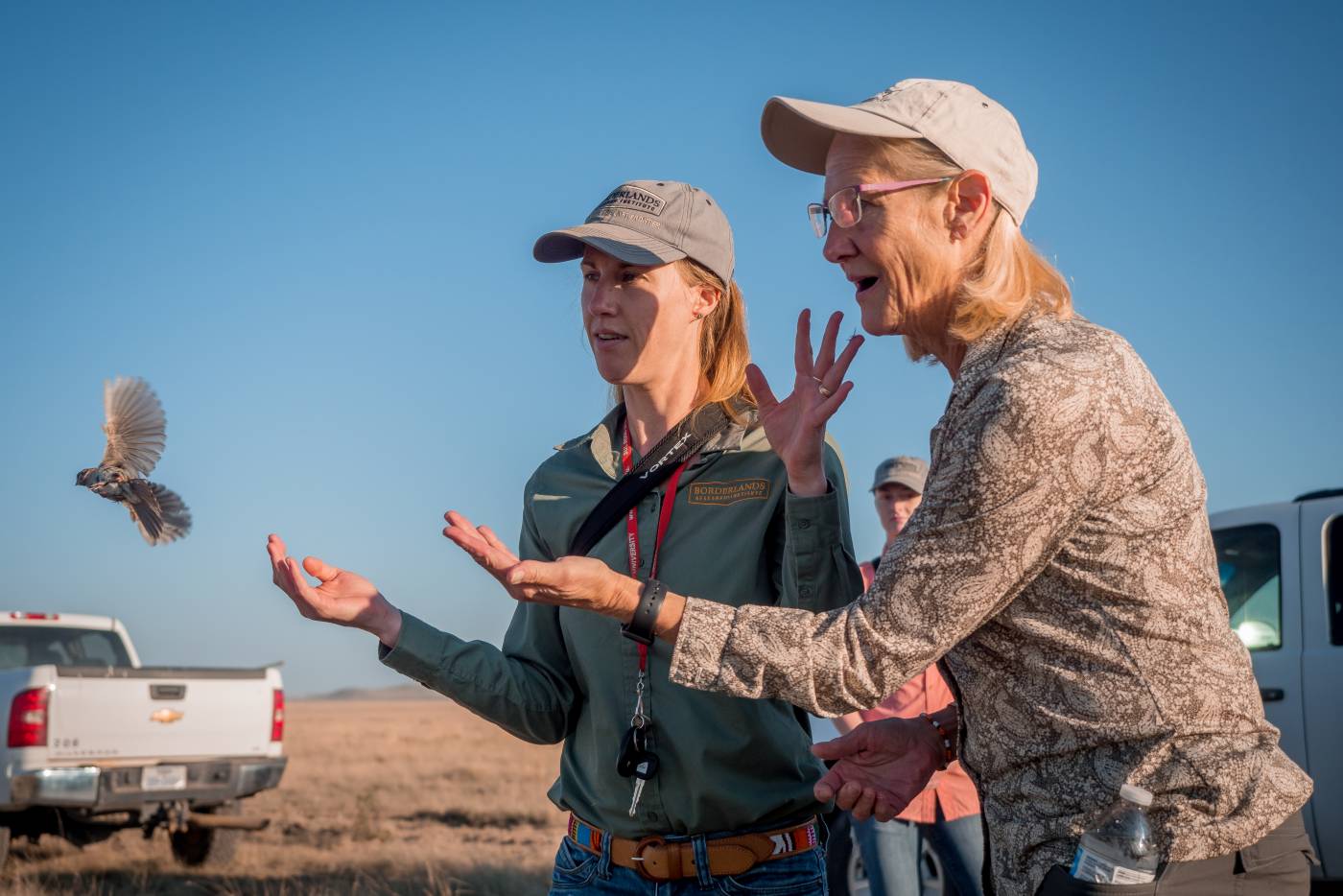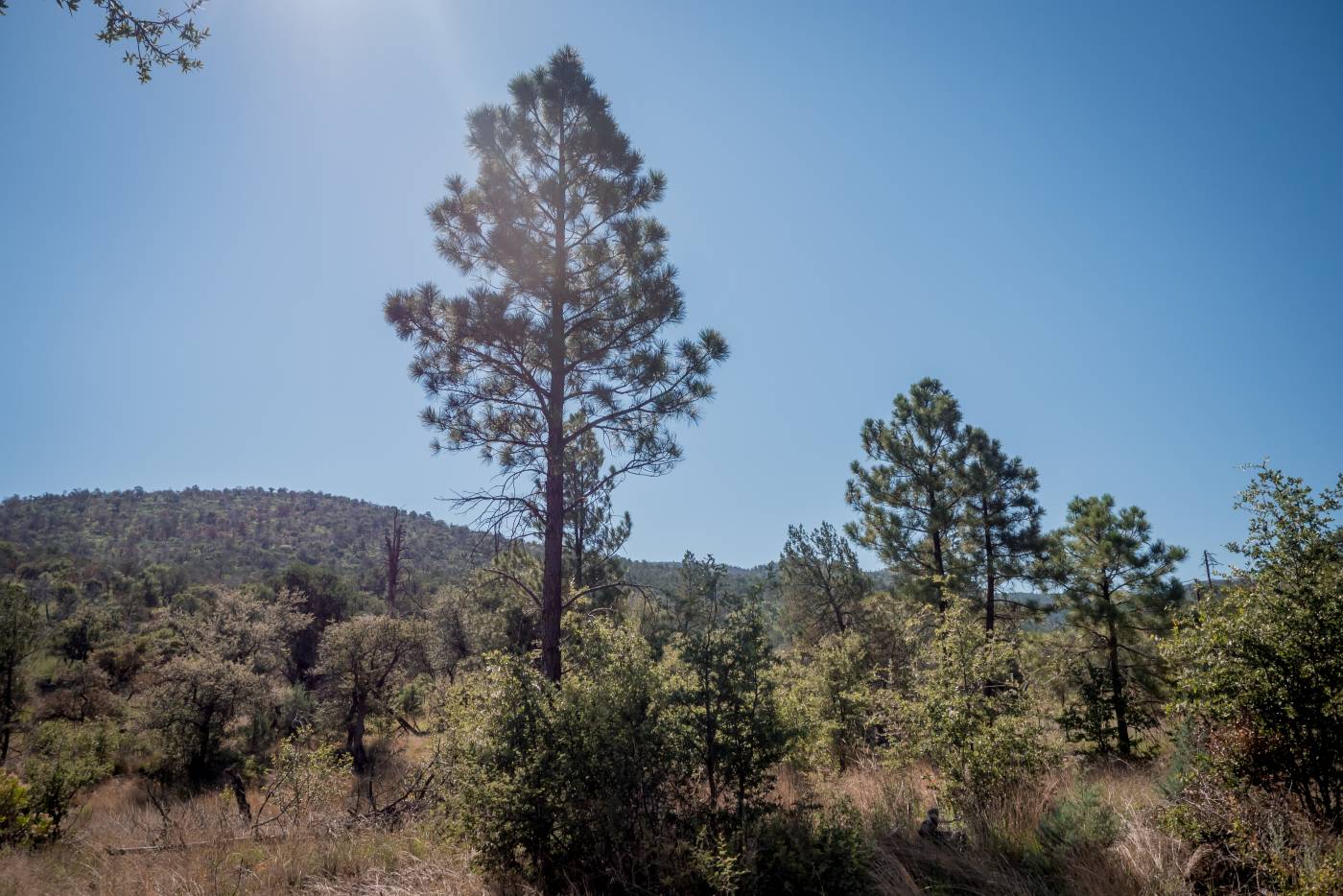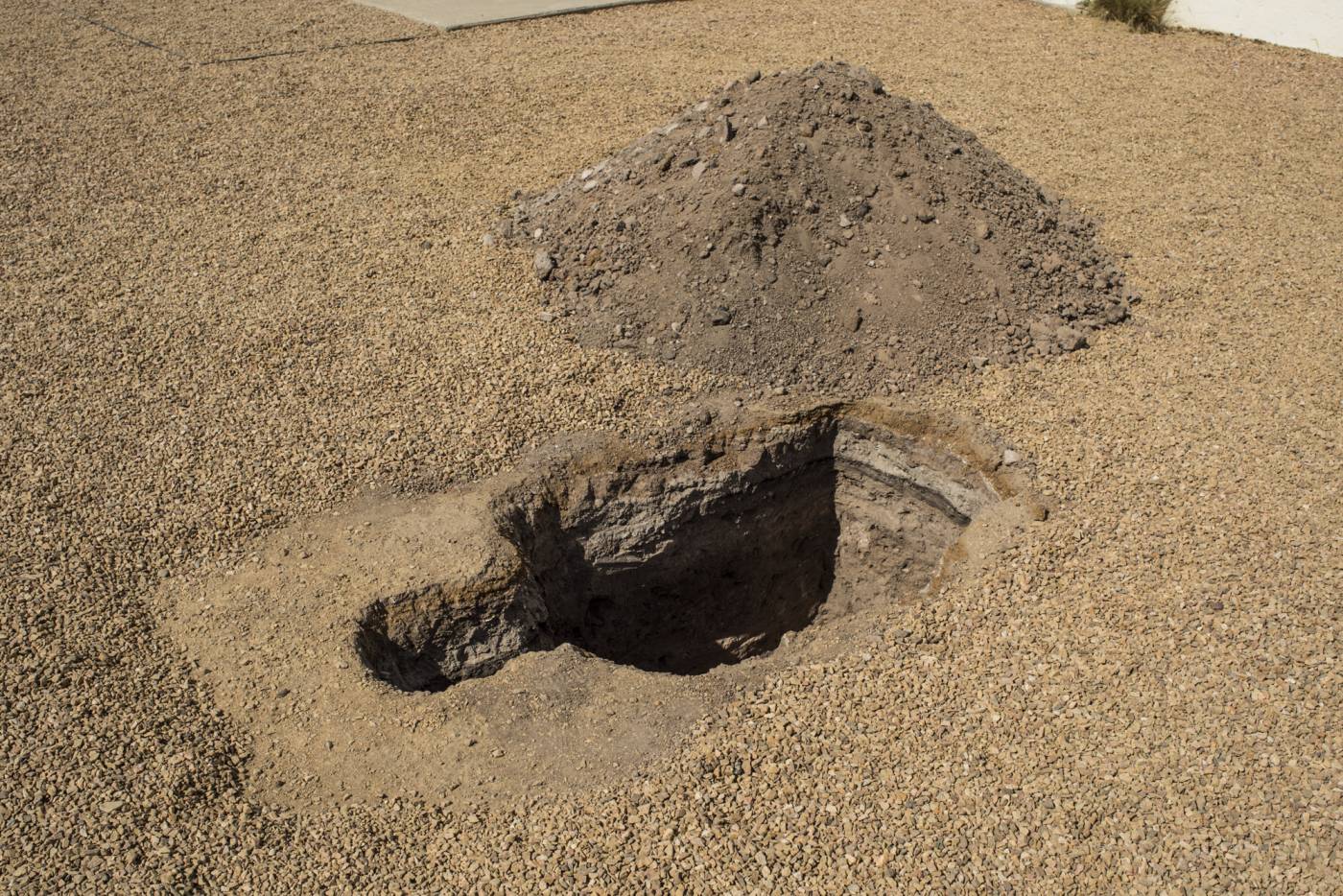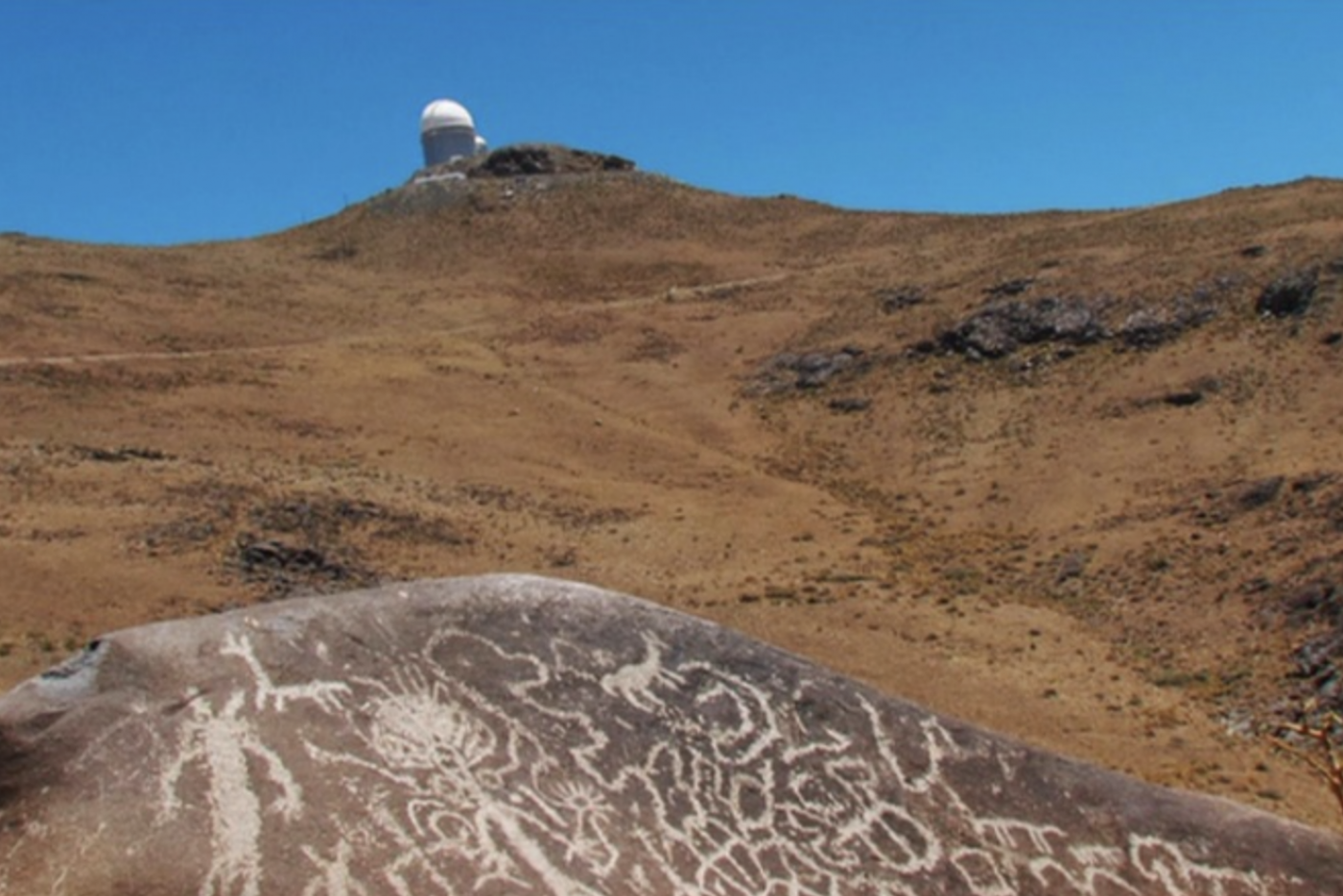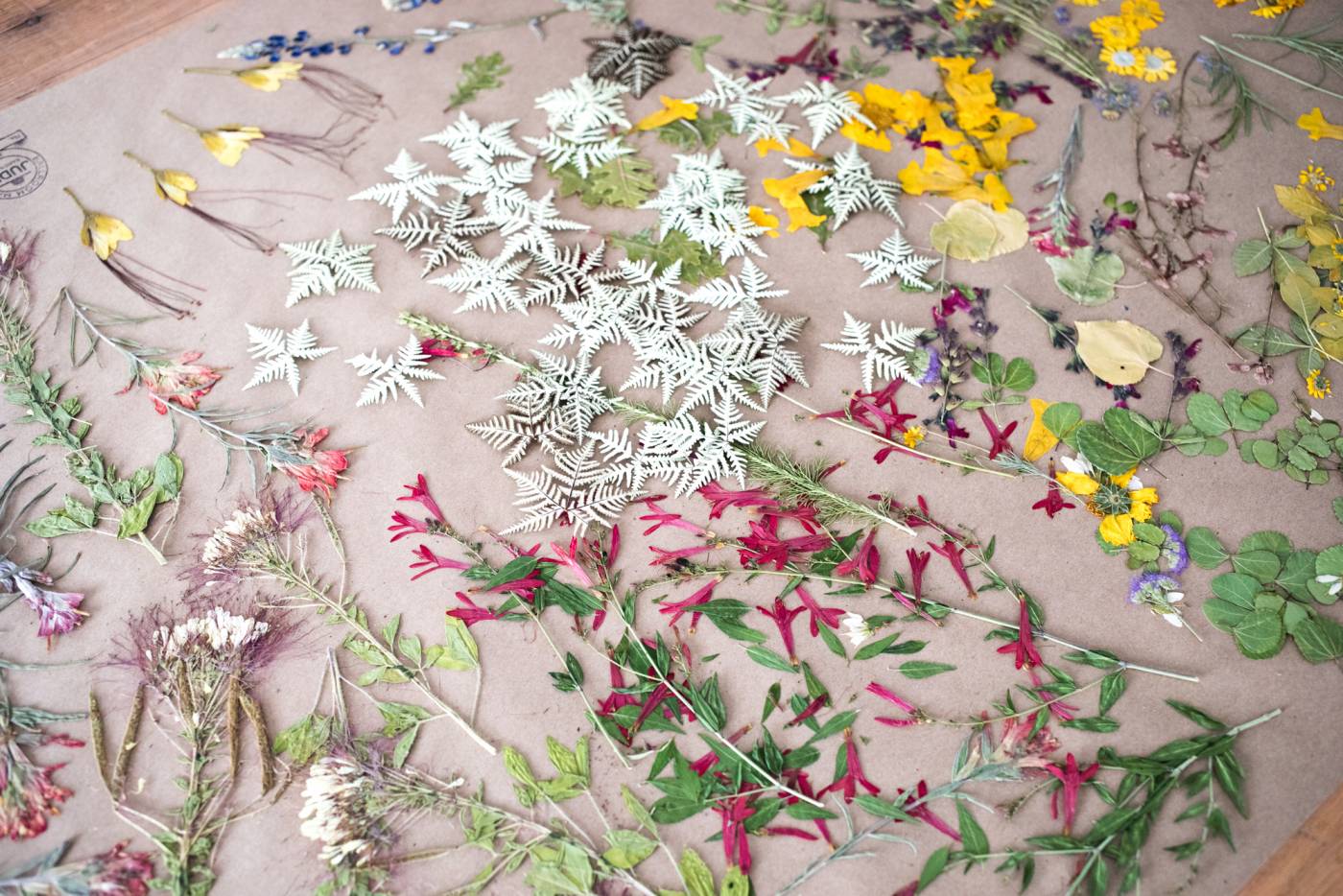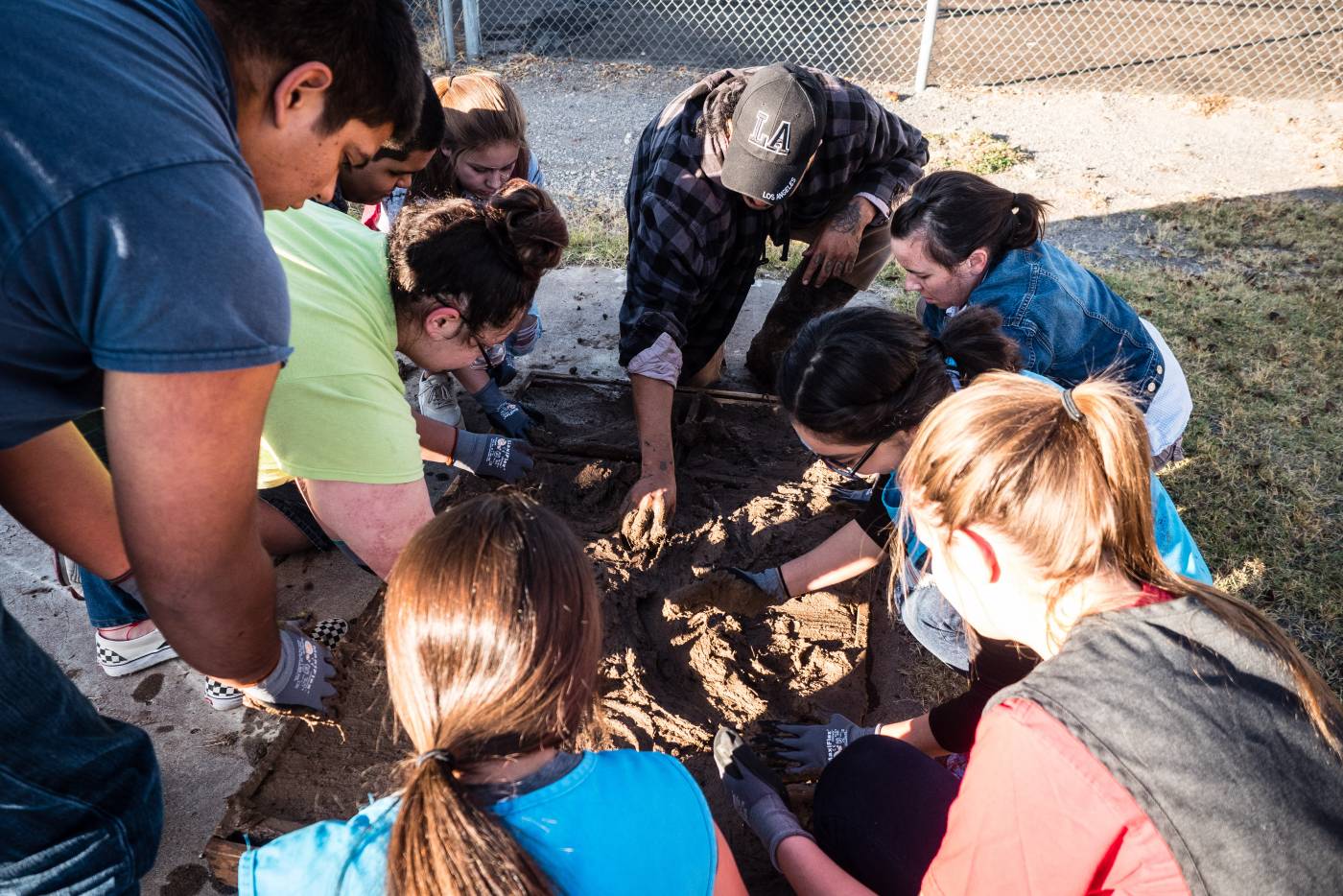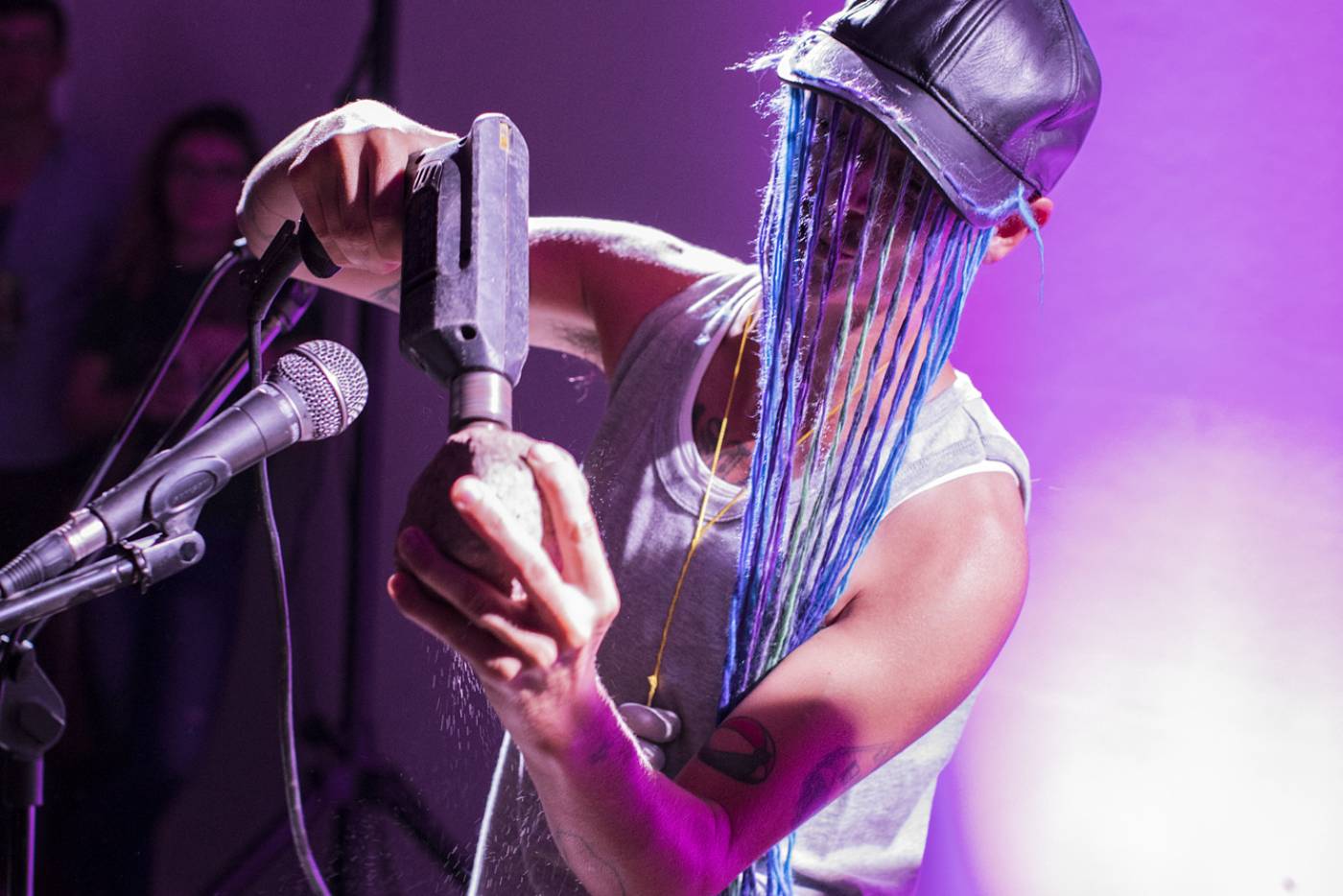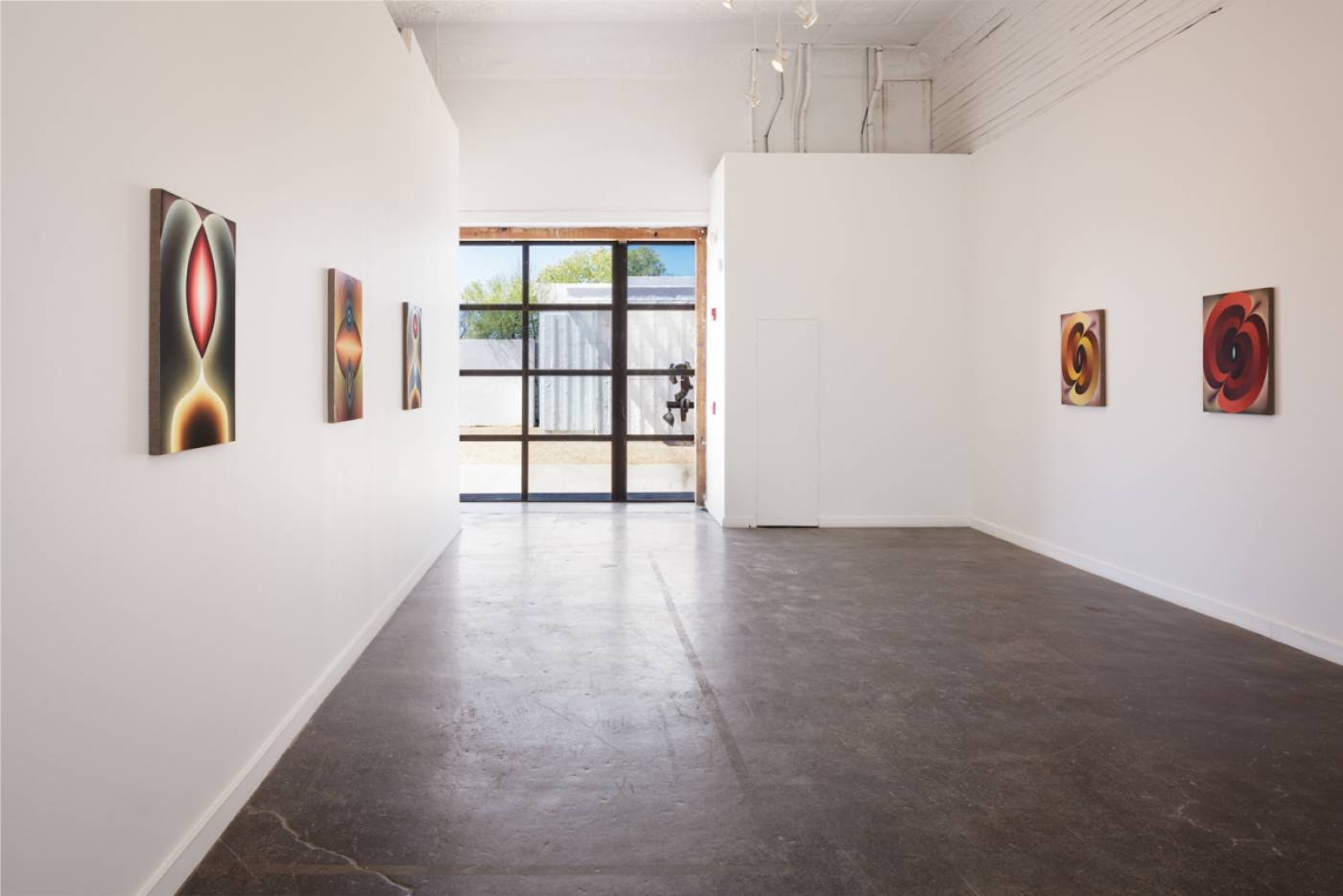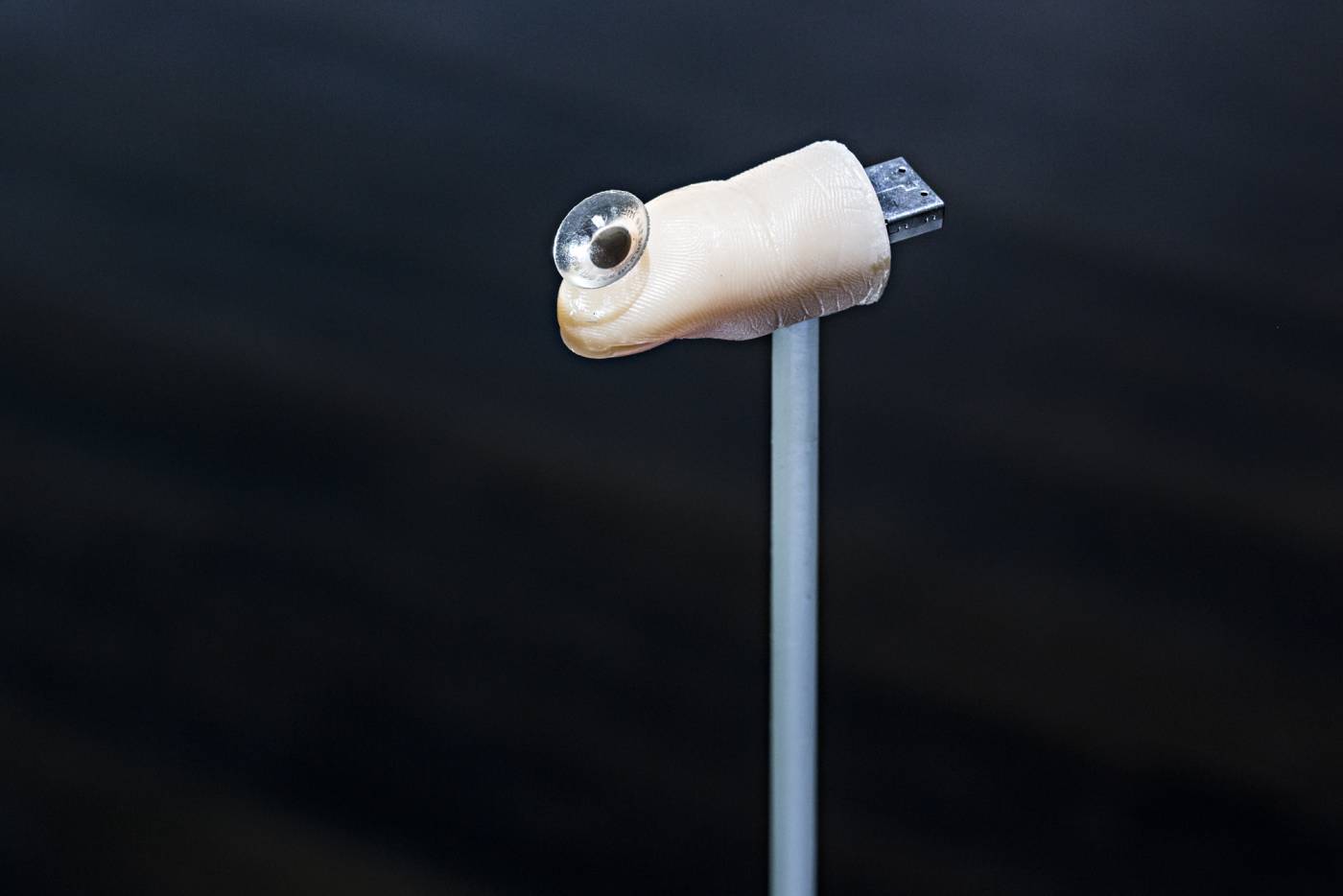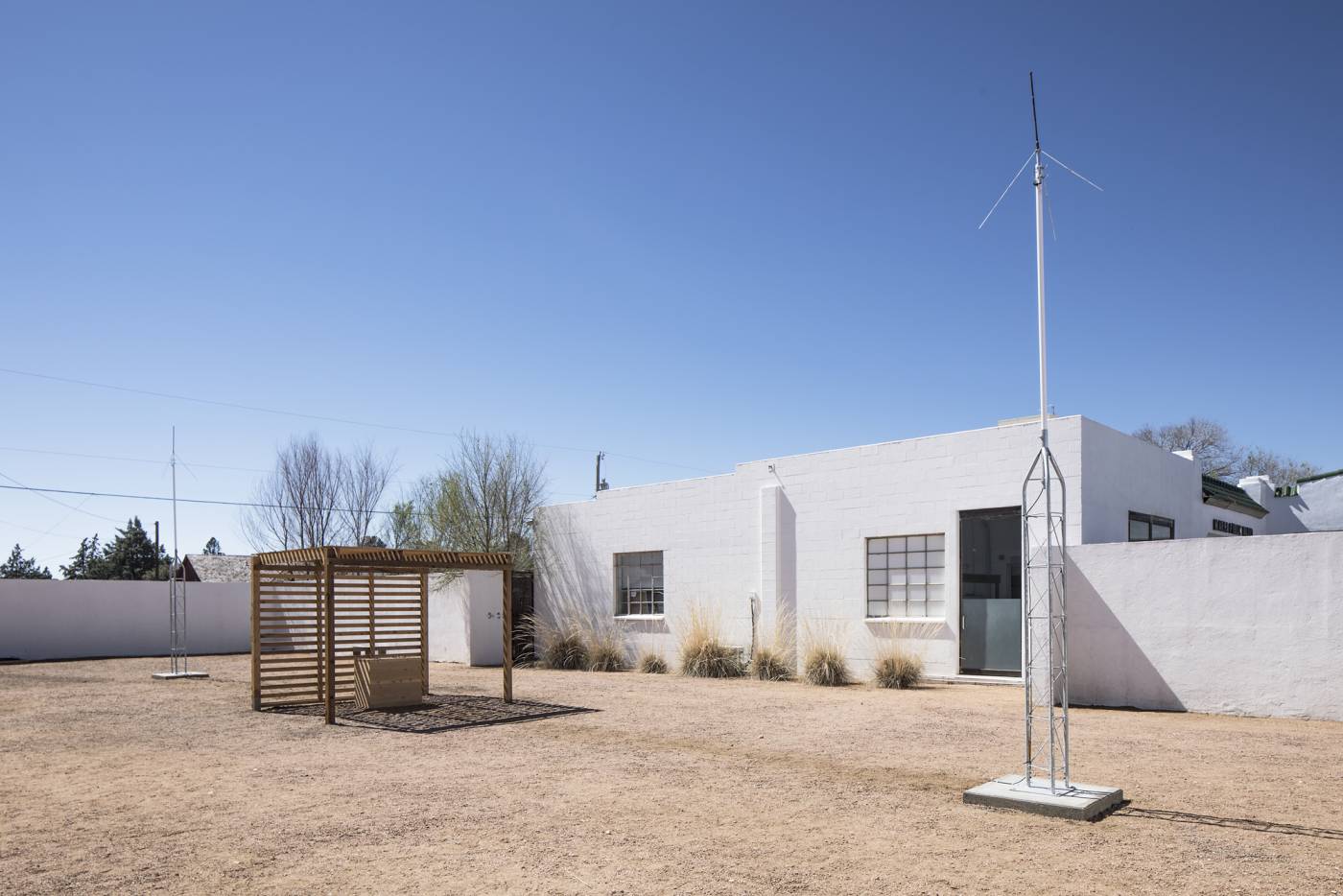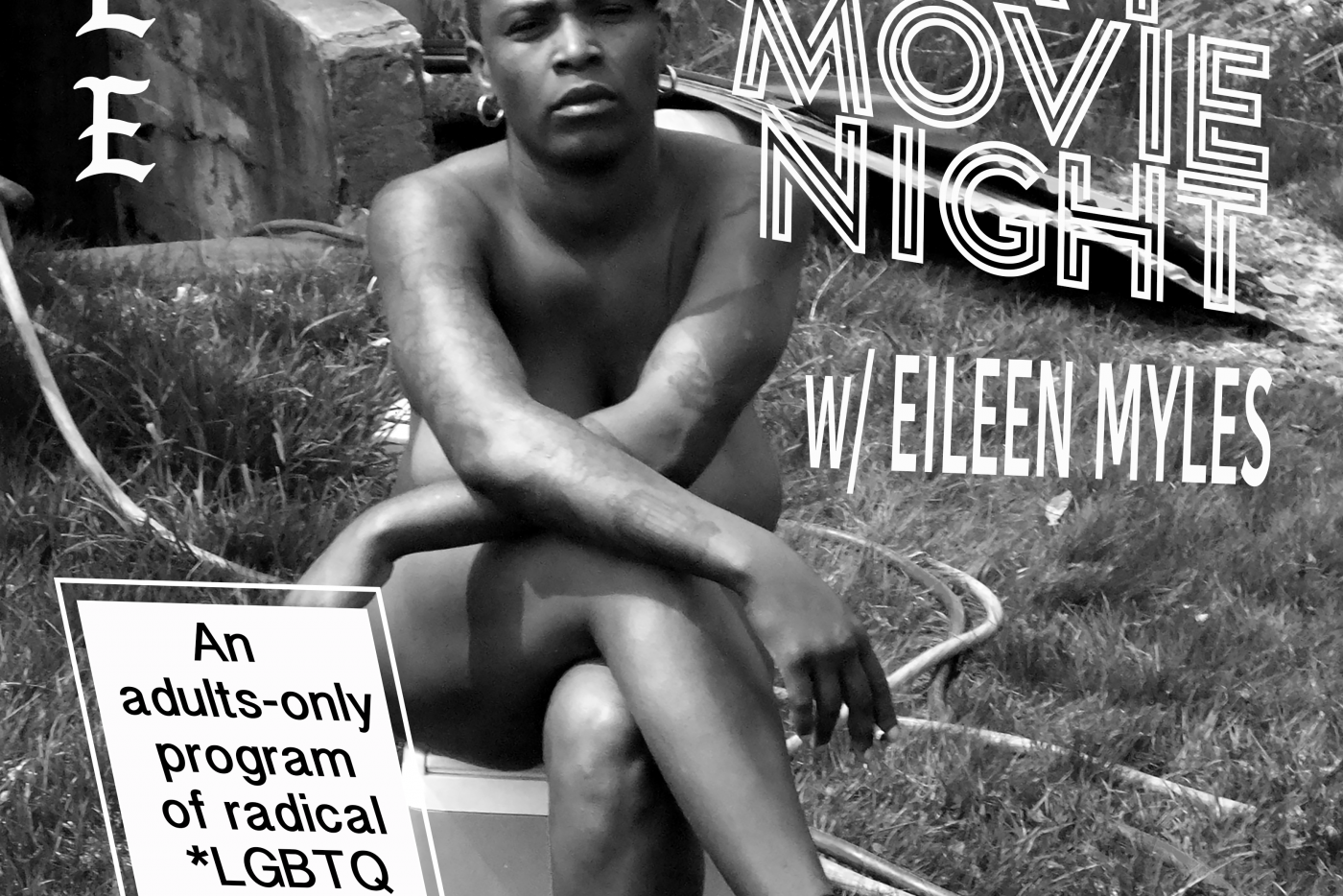Exhibition
Center for Land Use Interpretation | Megan May Daalder | Tara Donovan | Nance Klehm | Postcommodity | Emilija Škarnulyte | Sissel Marie Tonn with Jonathan Reus
As well as objects and loans from David Brooks, the Center for Big Bend Studies | the Chihuahuan Desert Mining Heritage Exhibit | Earthworks | Rafa Esparza | Raviv Ganchrow | Paul Johnson | Candice Lin | the Long Now Foundation | Iván Navarro | the Sul Ross Herbarium | the Rio Grande Research Center | Oscar Santillán | The University of Texas at Austin McDonald Observatory
Hyperobjects was a group exhibition co-organized by philosopher and Rice University professor Timothy Morton and Ballroom Director & Curator Laura Copelin, that engaged ideas from Morton’s theory to confront the overwhelming scale of the current ecological crisis.
In his 2013 book, Hyperobjects: Philosophy and Ecology After the End of the World, Morton defines hyperobjects as entities that are huge—global warming, plastic in the ocean, nuclear waste—and seemingly incomprehensible. Morton argues that hyperobjects create an ecological awareness far beyond normal human comprehension. To understand a hyperobject, we must transform the way we see and experience the universe. In line with this idea, the exhibition sought to create encounters with artworks and non-art objects that de-centered and expanded the scale of human perception.
Via aesthetics, direct sensory experience, speculative explorations, and fluctuations in scale, the artists in Hyperobjects reflected various facets of this monumental theory. The exhibition featured installations and new commissions from the Center for Land Use Interpretation, Megan May Daalder, Tara Donovan, Nance Klehm, Postcommodity, Emilija Škarnulyte, and Sissel Marie Tonn with Jonathan Reus, as well as objects and loans from David Brooks, the Center for Big Bend Studies, the Chihuahuan Desert Mining Heritage Exhibit, Earthworks, Rafa Esparza, Raviv Ganchrow, Paul Johnson, Candice Lin, the Long Now Foundation, Iván Navarro, the Sul Ross Herbarium, the Rio Grande Research Center, Oscar Santillán, and The University of Texas at Austin McDonald Observatory.
Tara Donovan realized a site-specific iteration of Untitled (Plastic Cups), a work where she applies sculptural process to the fundamental properties of an object, in this case a plastic cup, at a scale that transforms the cup into something else entirely. Emilija Škarnulyte’s immersive video installation displayed neutrino detectors and nuclear submarines from the perspective of an anthropologist from the distant future. Megan May Daalder showed her Mirrorbox, a wearable double helmet invented by the artist to reflect and combine the facial features of participants, breaking down perceived boundaries between self and other.
Sissel Marie Tonn installed a new configuration of her Intimate Earthquake Archive, allowing visitors to wear vests that transmit seismic data from man-made earthquakes caused by gas drilling. Nance Klehm dug massive holes in Ballroom’s courtyard: burrowing, creating heaps, analyzing soil, cataloging detritus, and giving visitors an opportunity to be physically immersed in earth.
The artist collective Postcommodity considered the US/Mexico border with a sound installation that dramatized the government’s co-opting of myth, language, and voice to entrap migrants moving across the landscape. Dedicated to understanding human interactions with the land’s surface in the USA, the Center for Land Use Interpretation (CLUI) researched and mapped phenomena across the West Texas landscape and added these new sites to their encyclopedic online archive.
Copelin and Morton also included objects sourced from the botanical, geological, and astronomical fields local to Marfa and the Trans-Pecos, loaned by academic partners at the University of Texas at Austin and multiple departments at Sul Ross State University including: the Center for Big Bend Studies, the Rio Grande Research Center, and the Sul Ross Herbarium. Distributed among these specimens and samples were artworks and objects from David Brooks, Earthworks, Rafa Esparza, Raviv Ganchrow, Paul Johnson, Candice Lin, the Long Now Foundation, Iván Navarro, and Oscar Santillán.
Ballroom Marfa collaborated with local, regional, and national research organizations on a slate of supplementary programs that responded to the exhibition and connected participants to the singular ecology of the Trans-Pecos. Project partners included the Borderlands Research Institute, Rice University’s Center for Energy & Environmental Research in the Human Sciences and The Nature Conservancy, among others.
